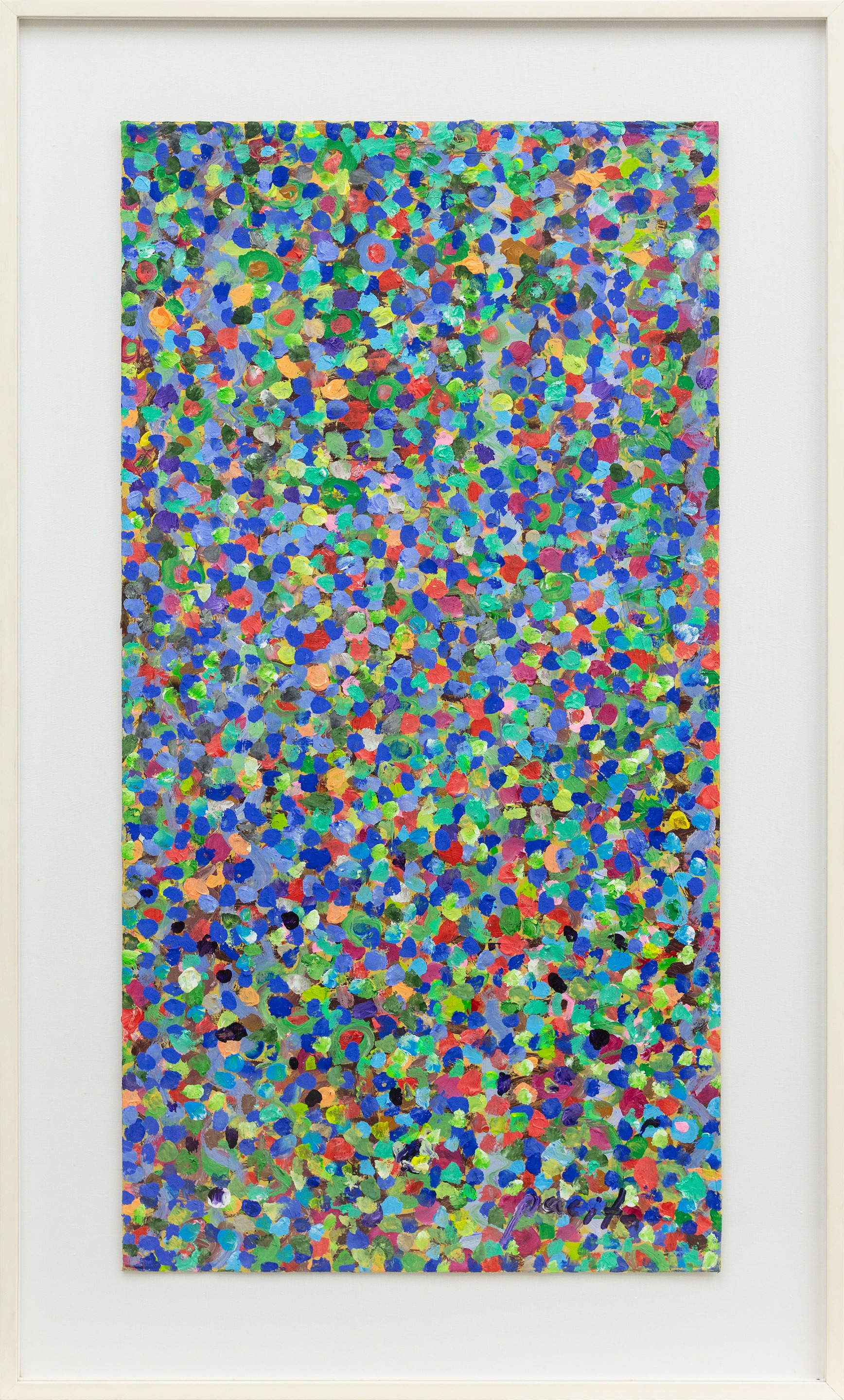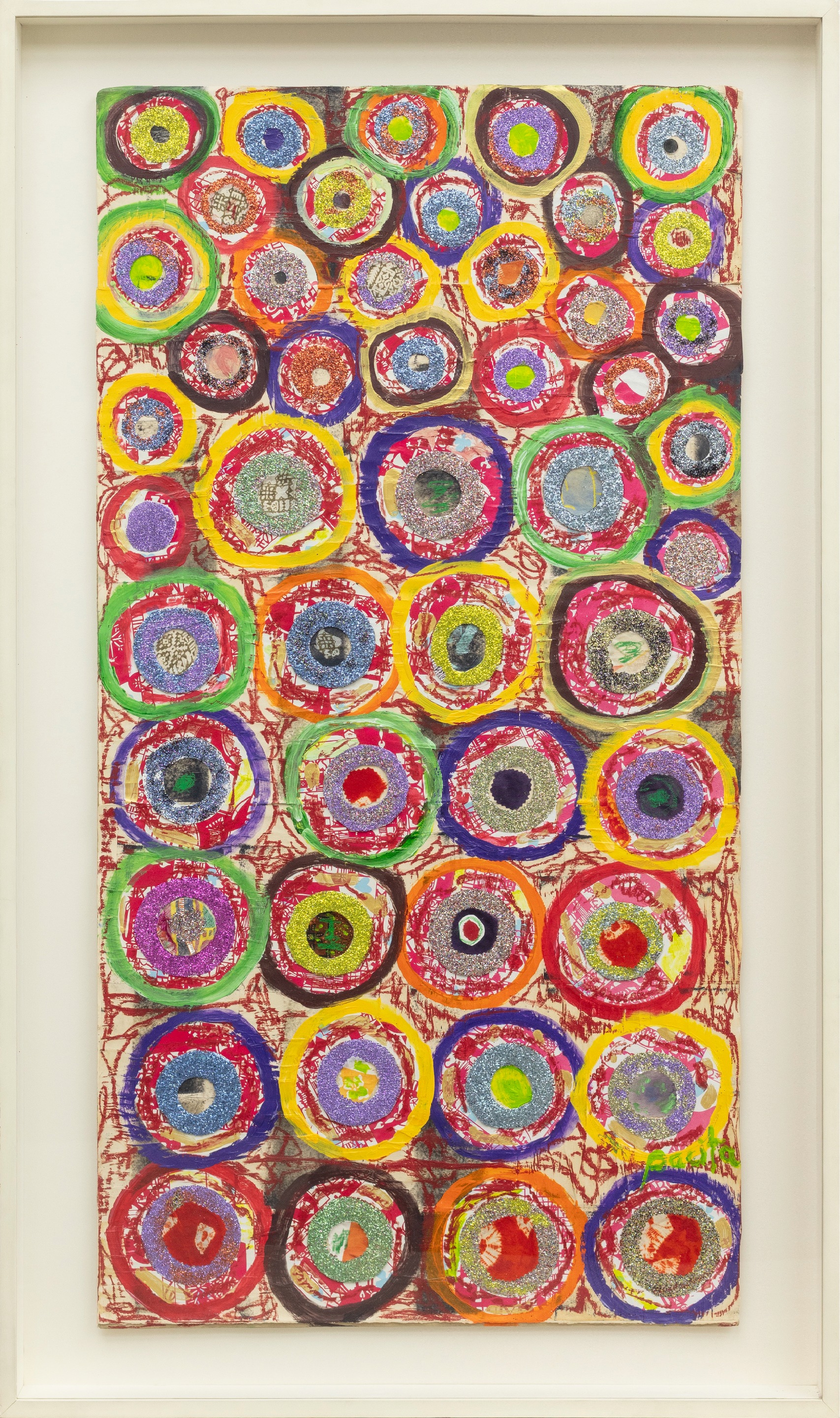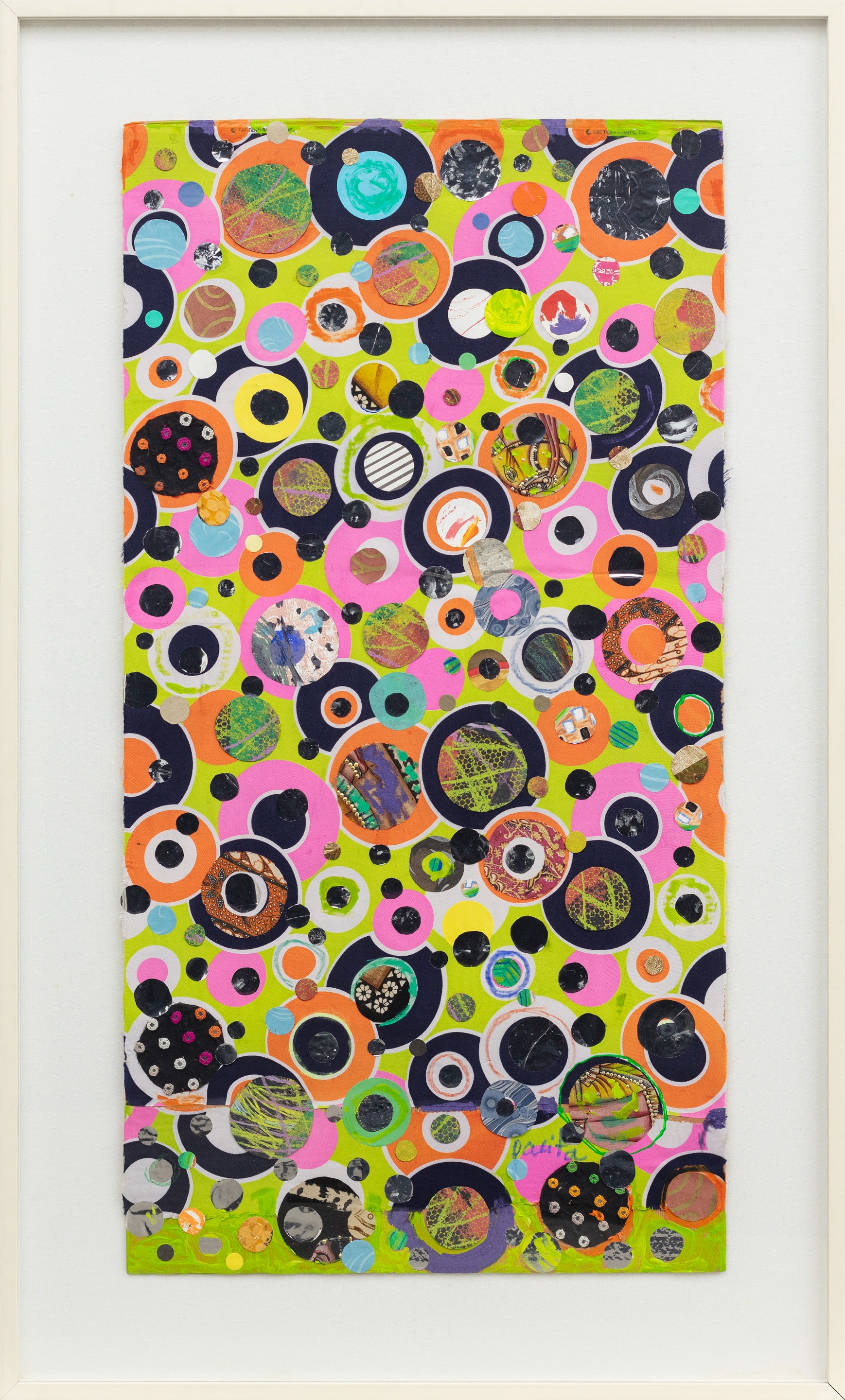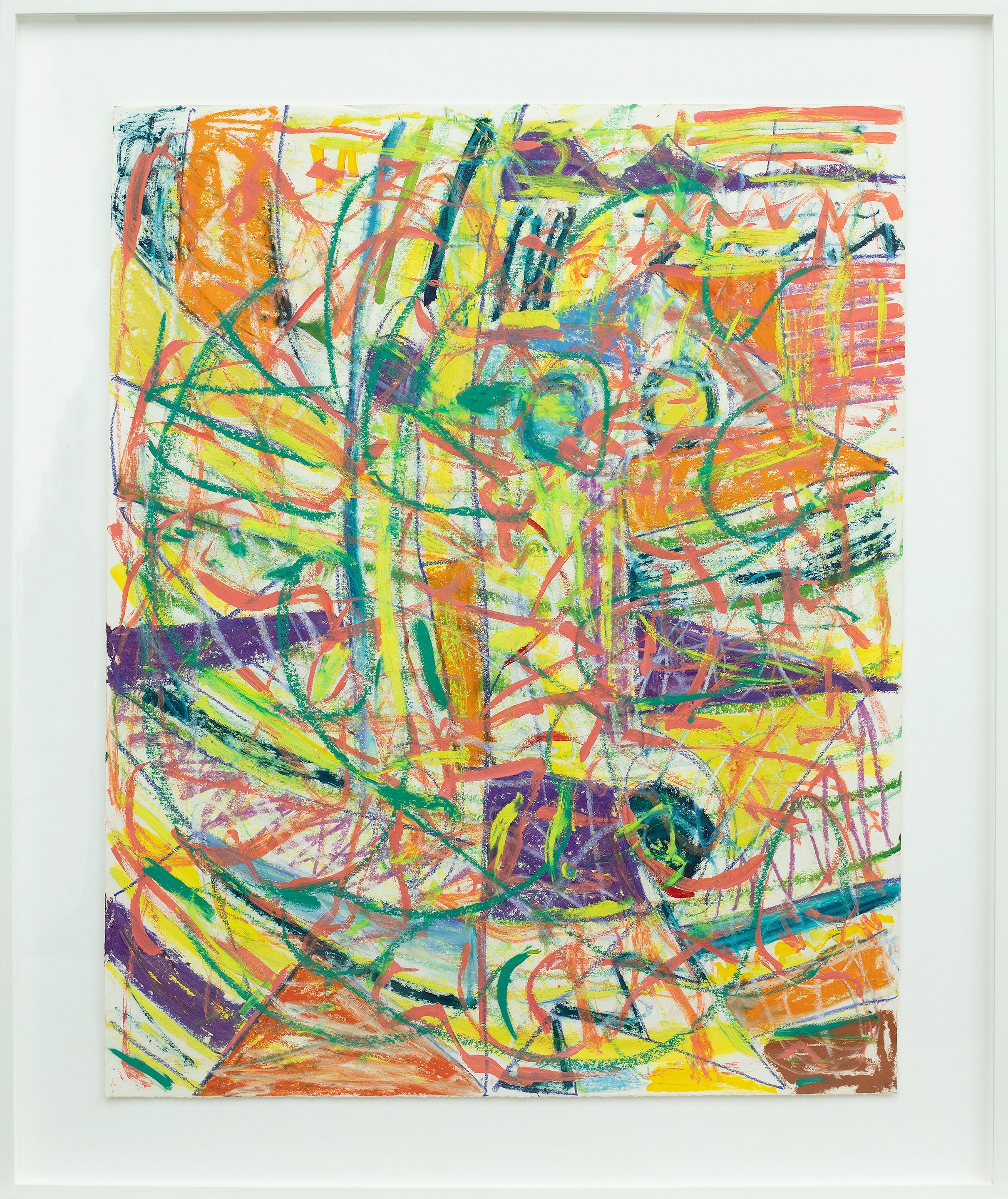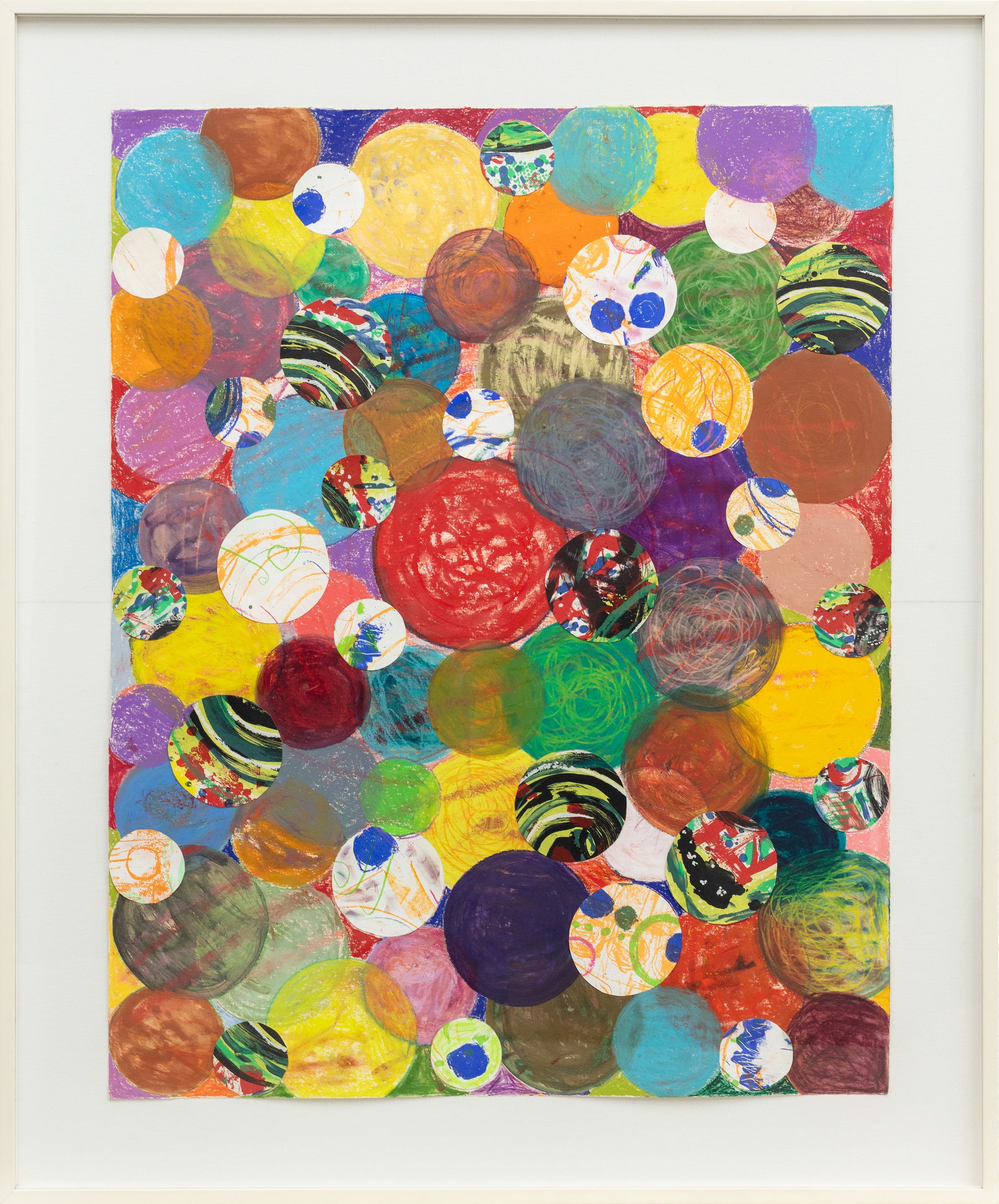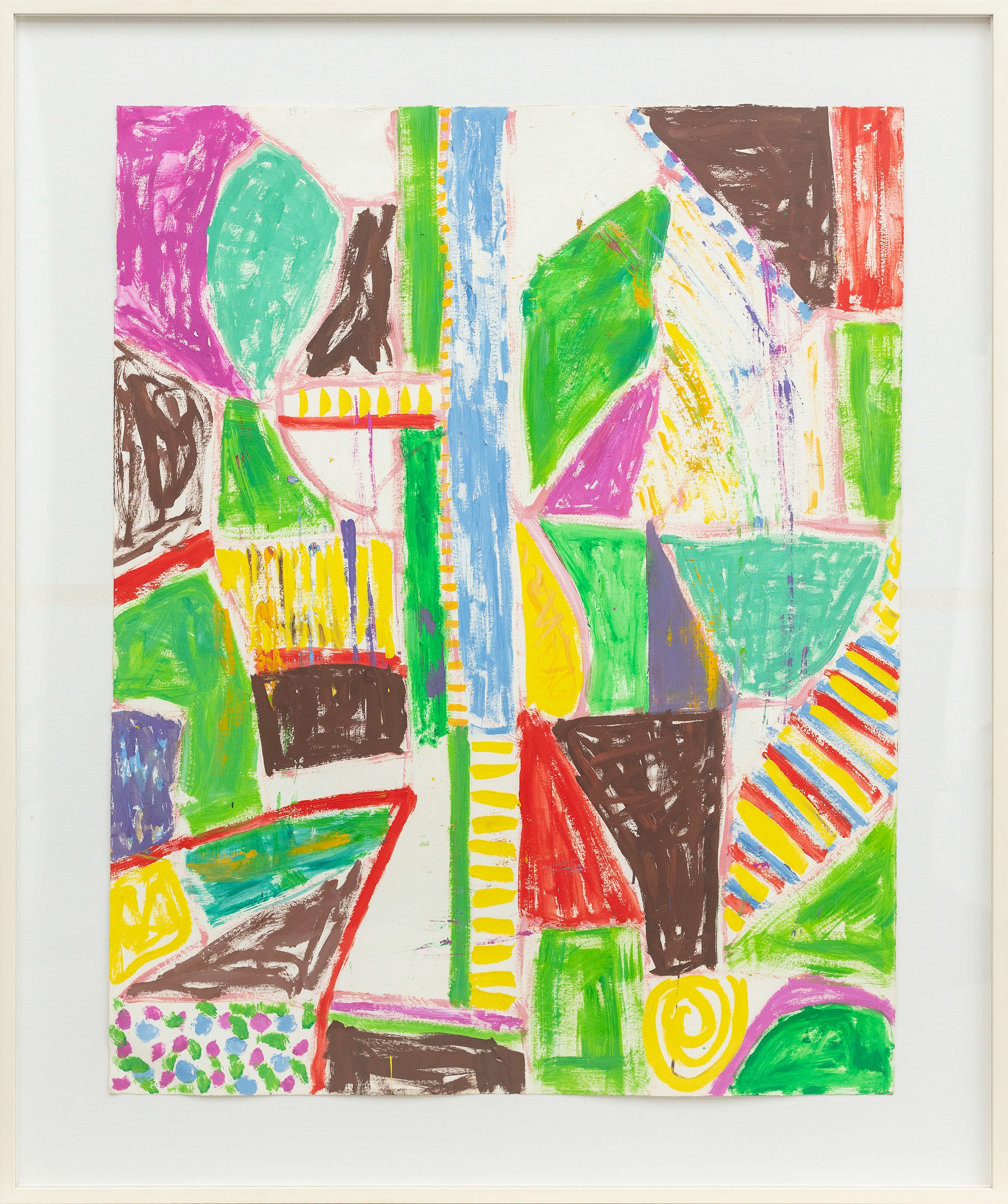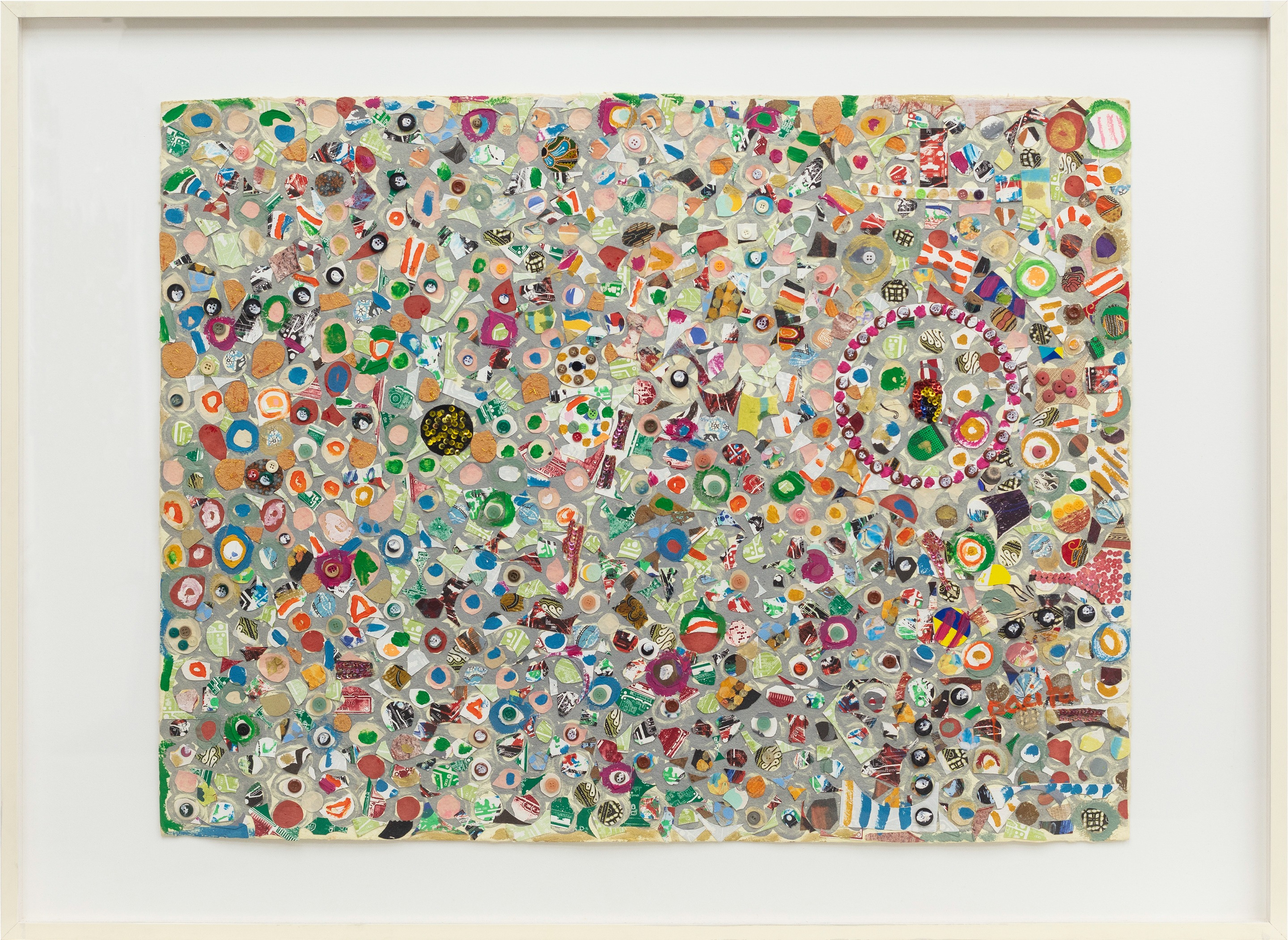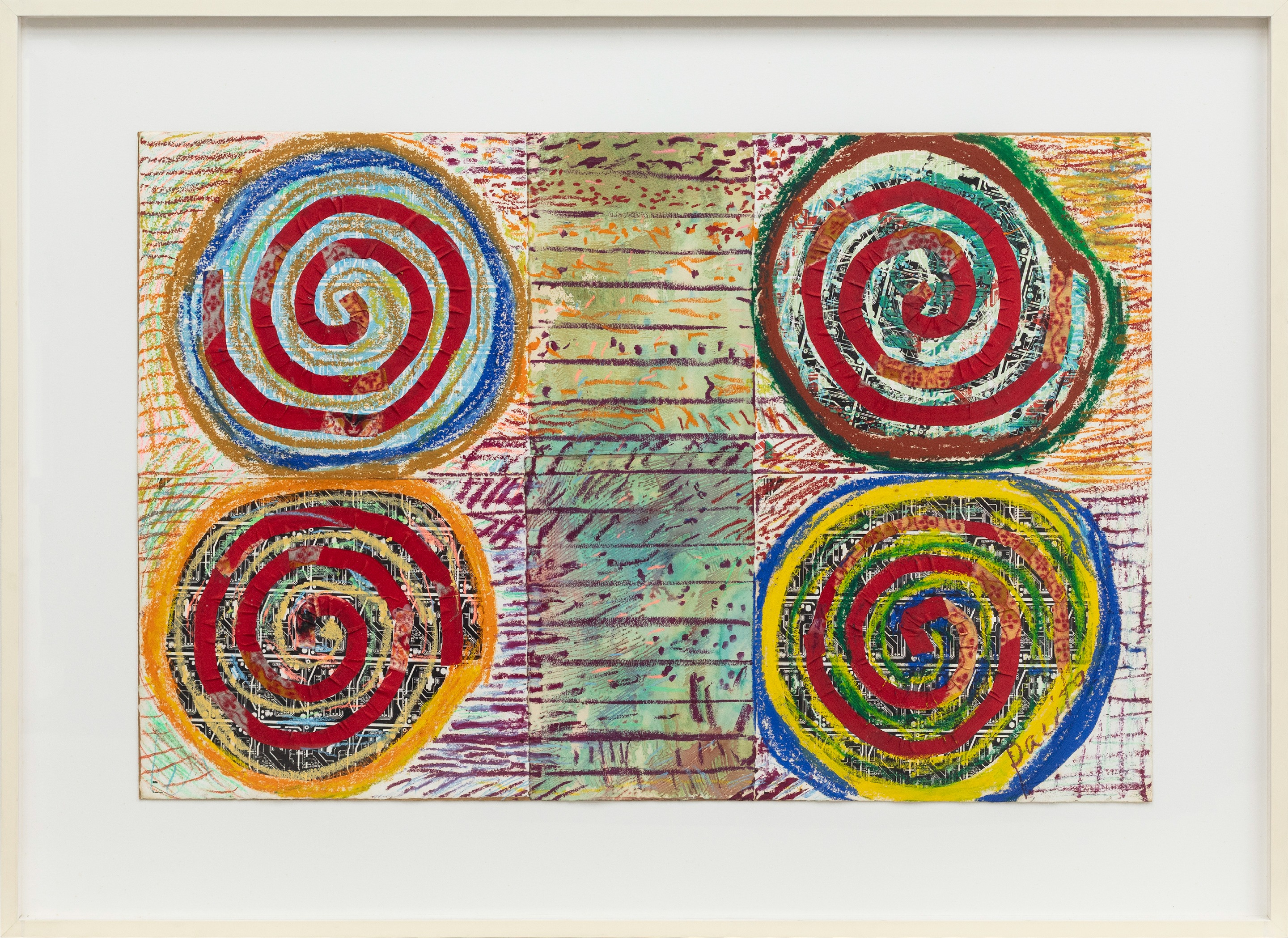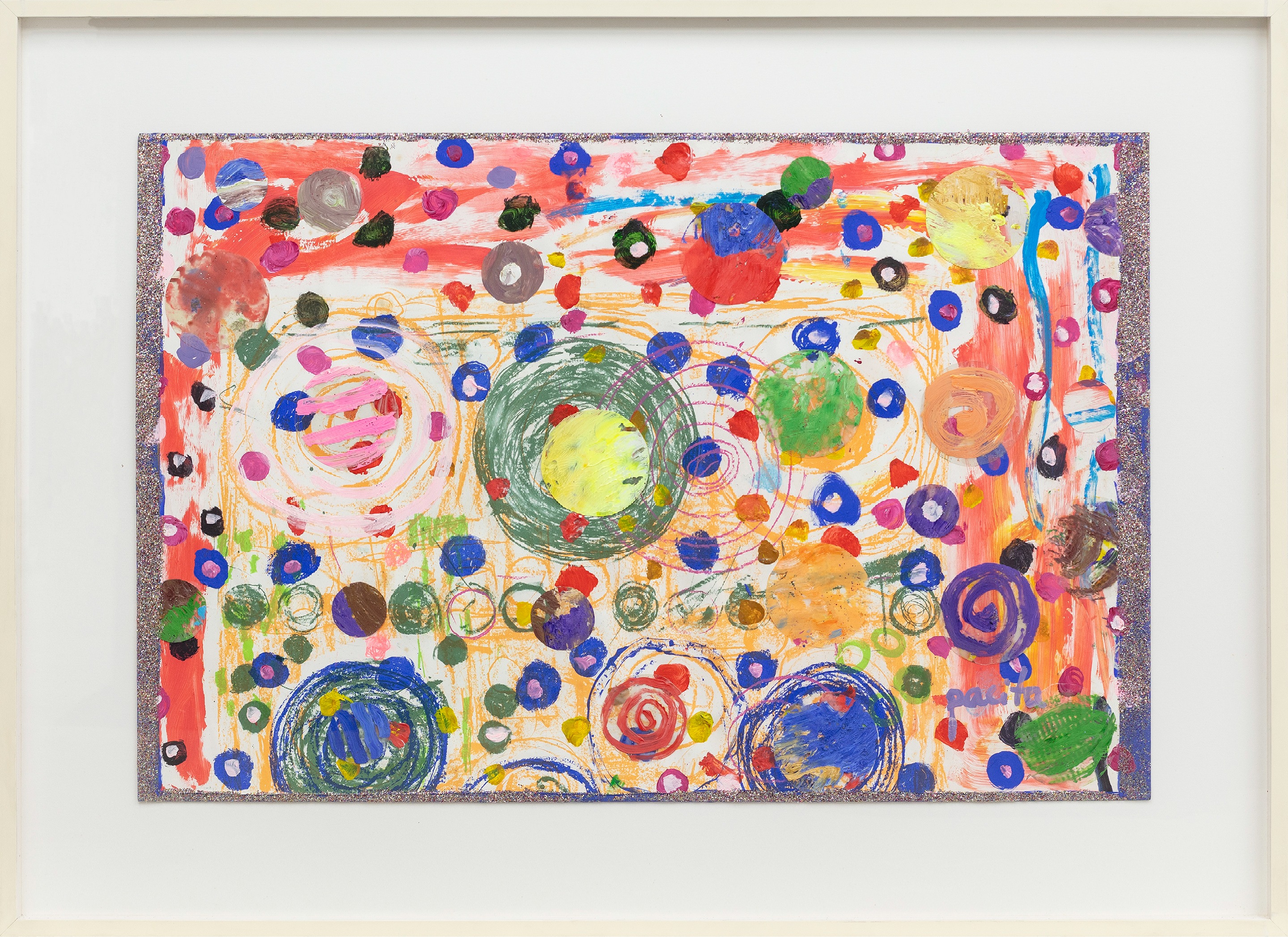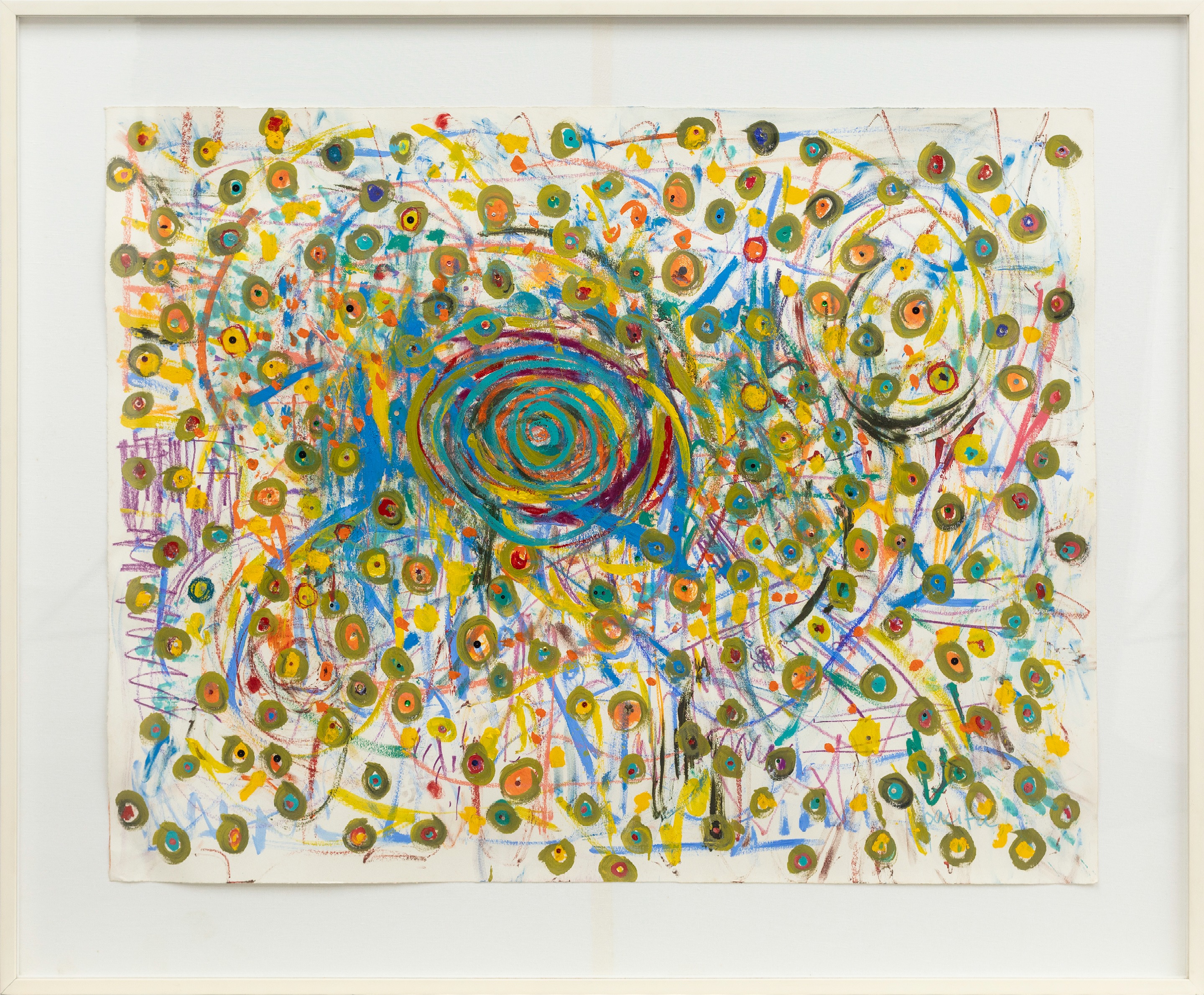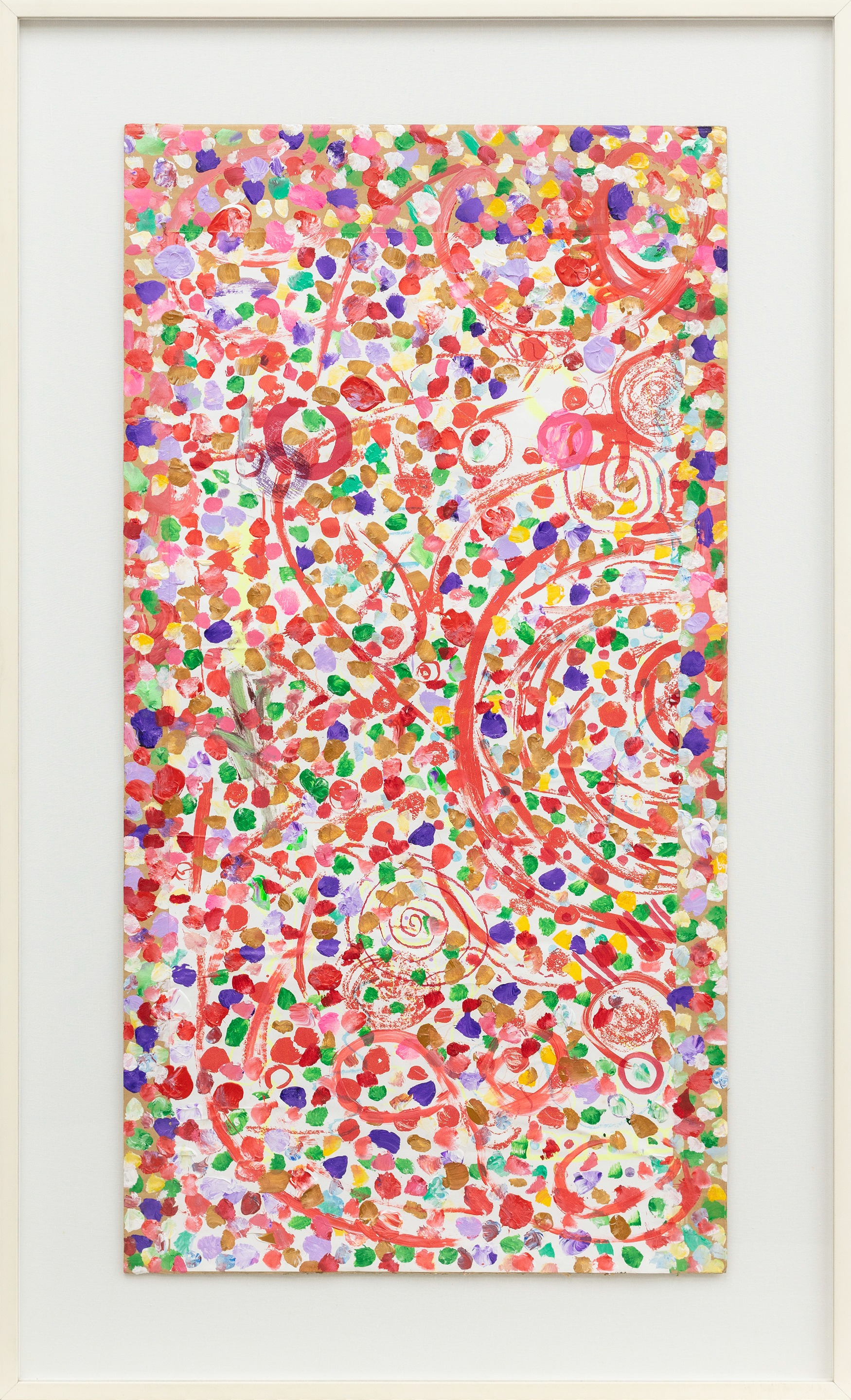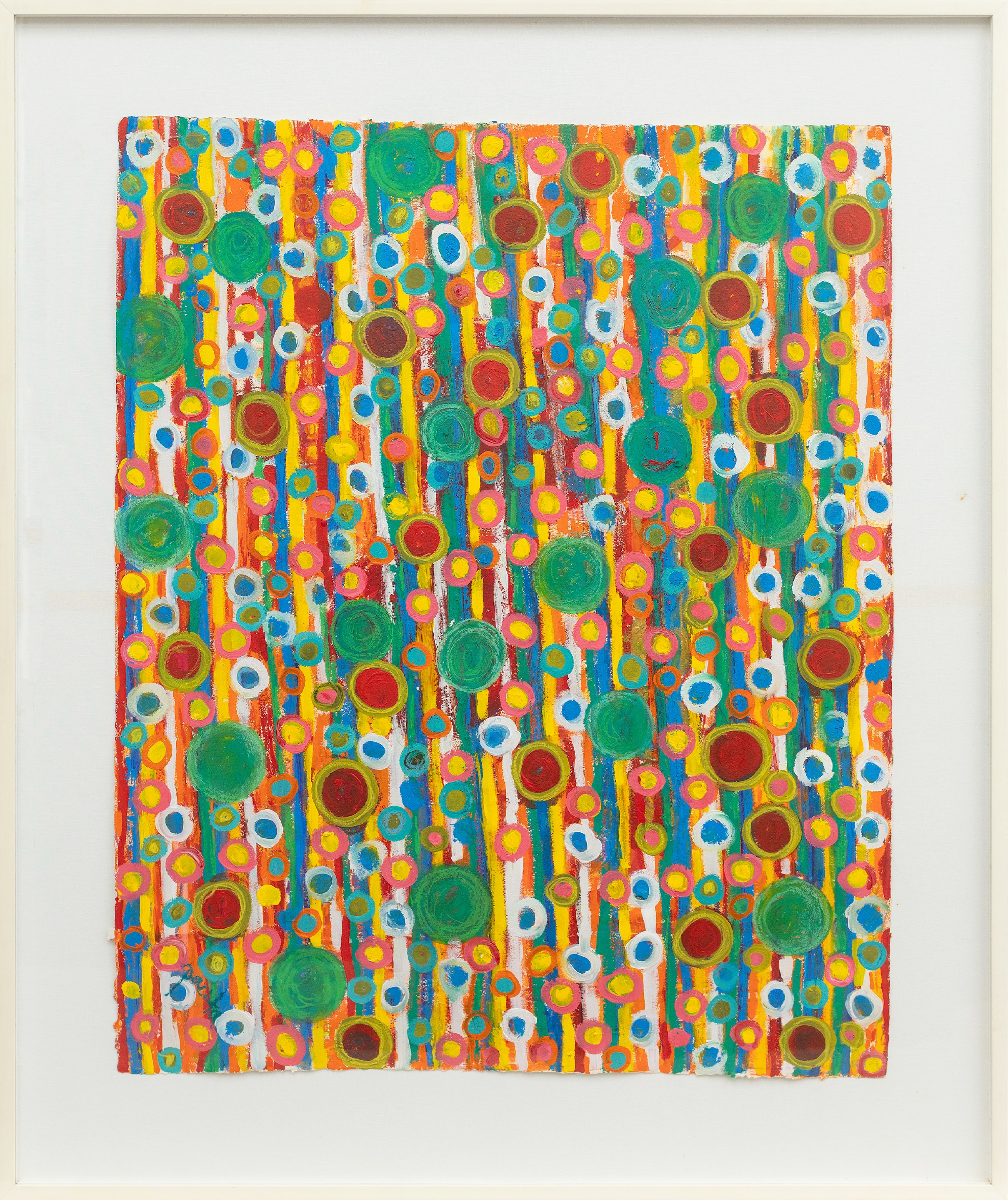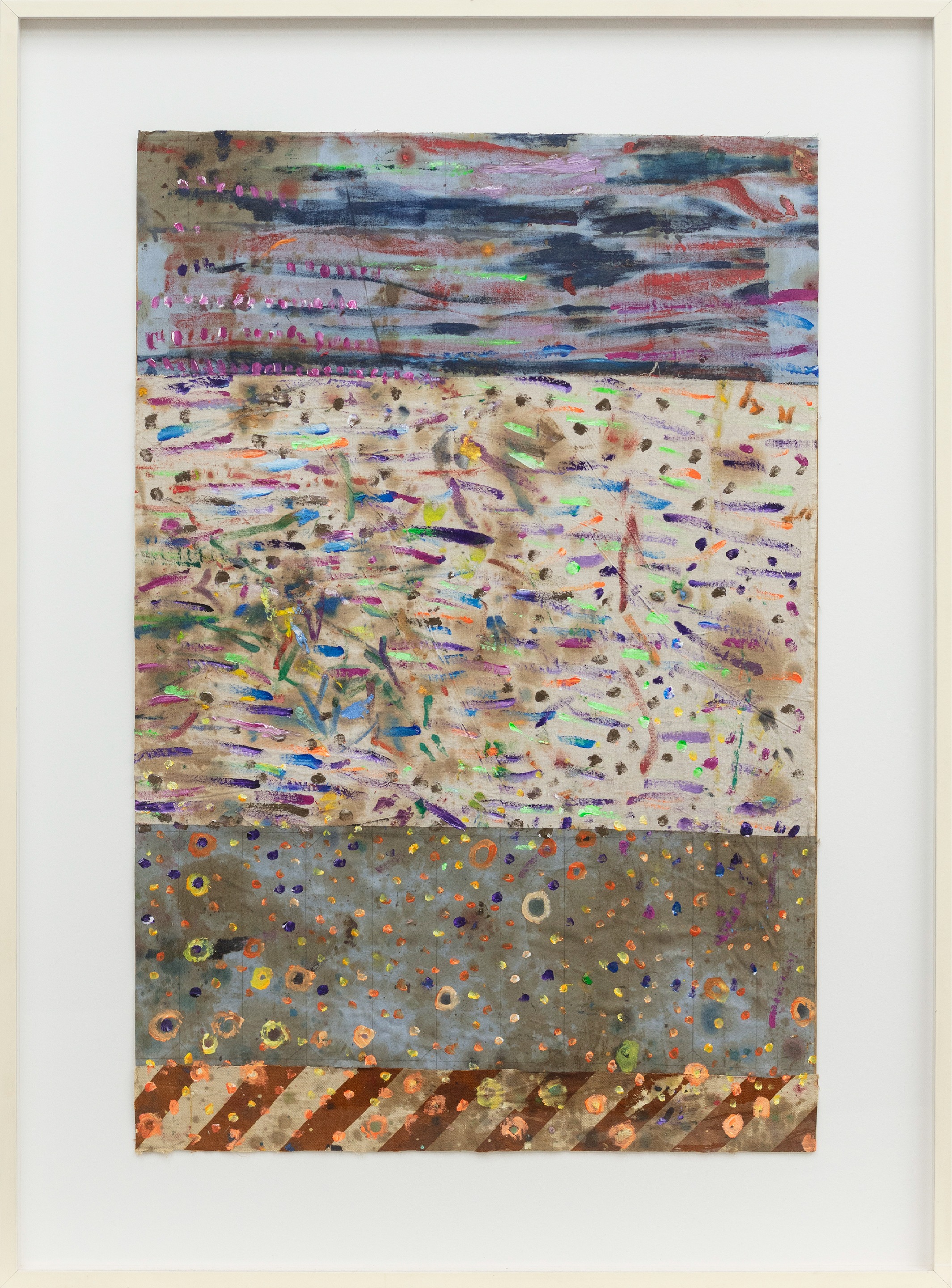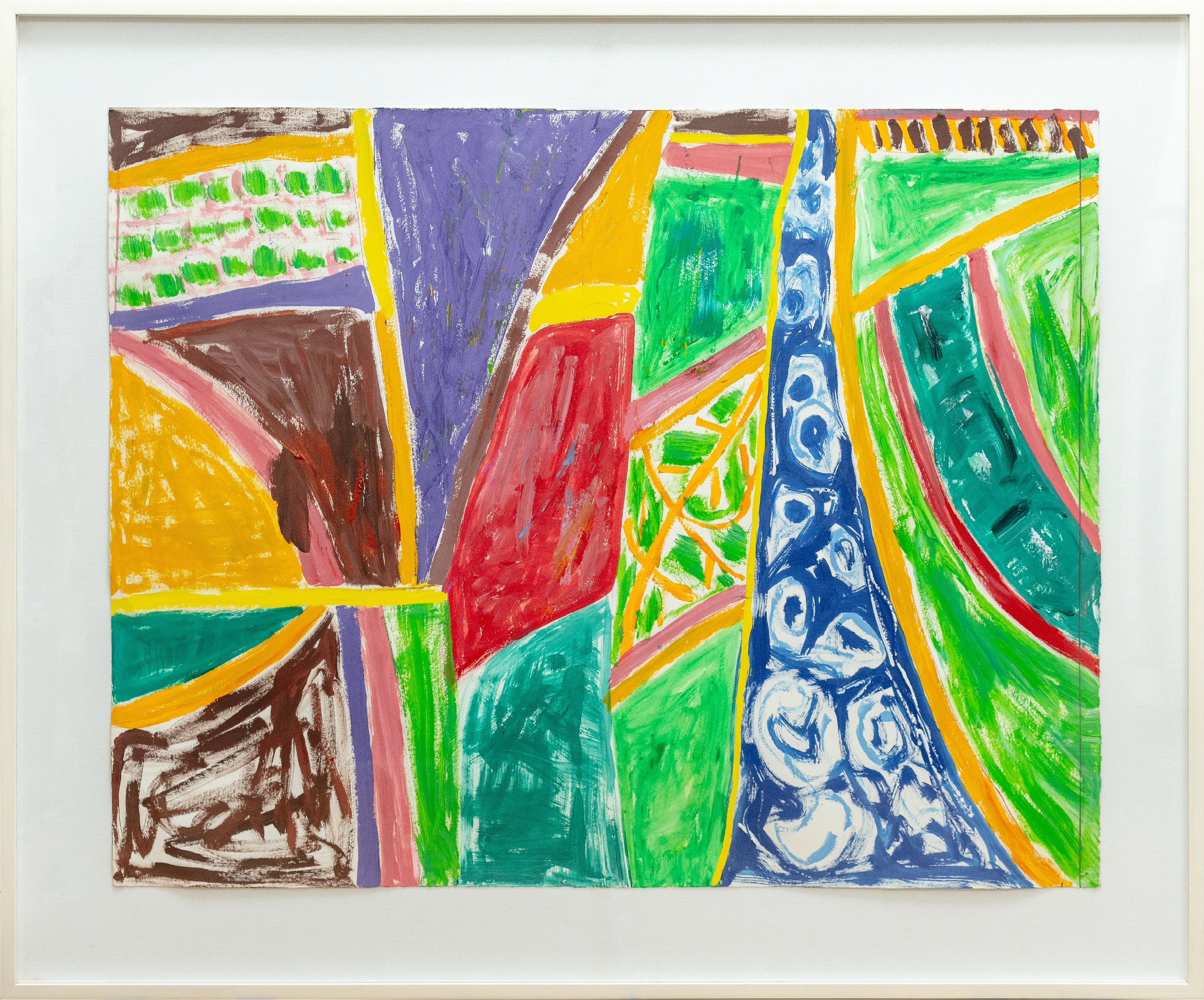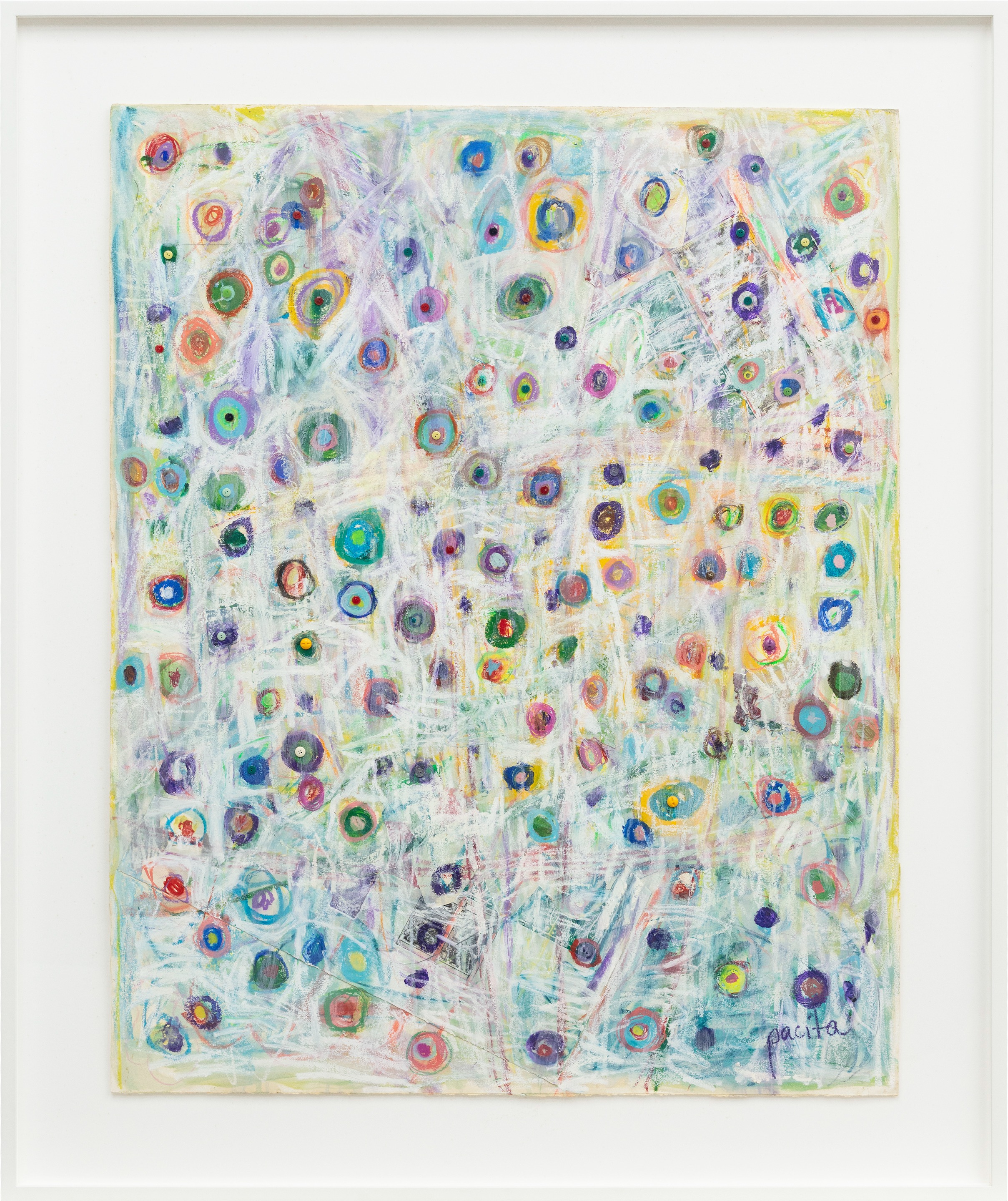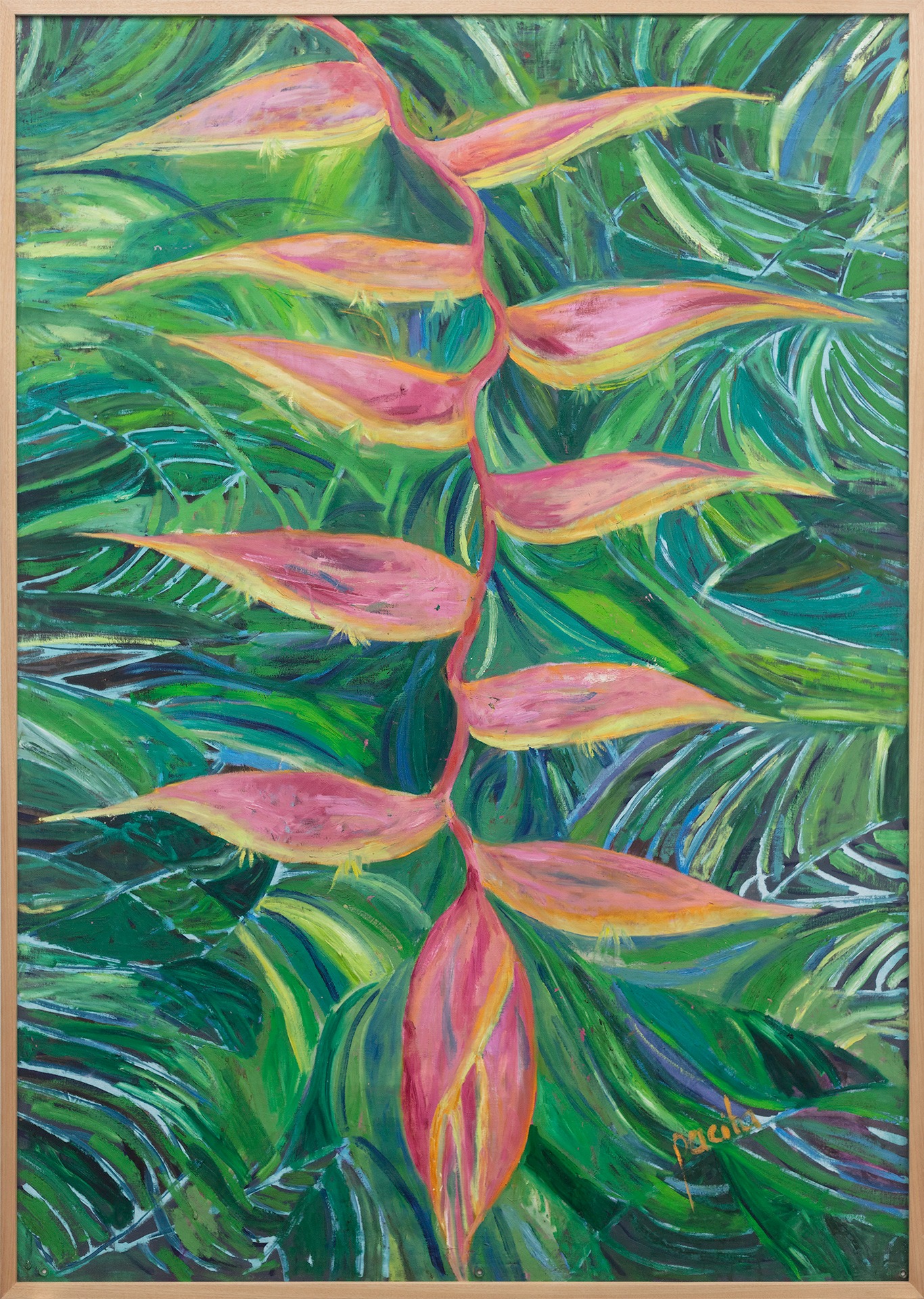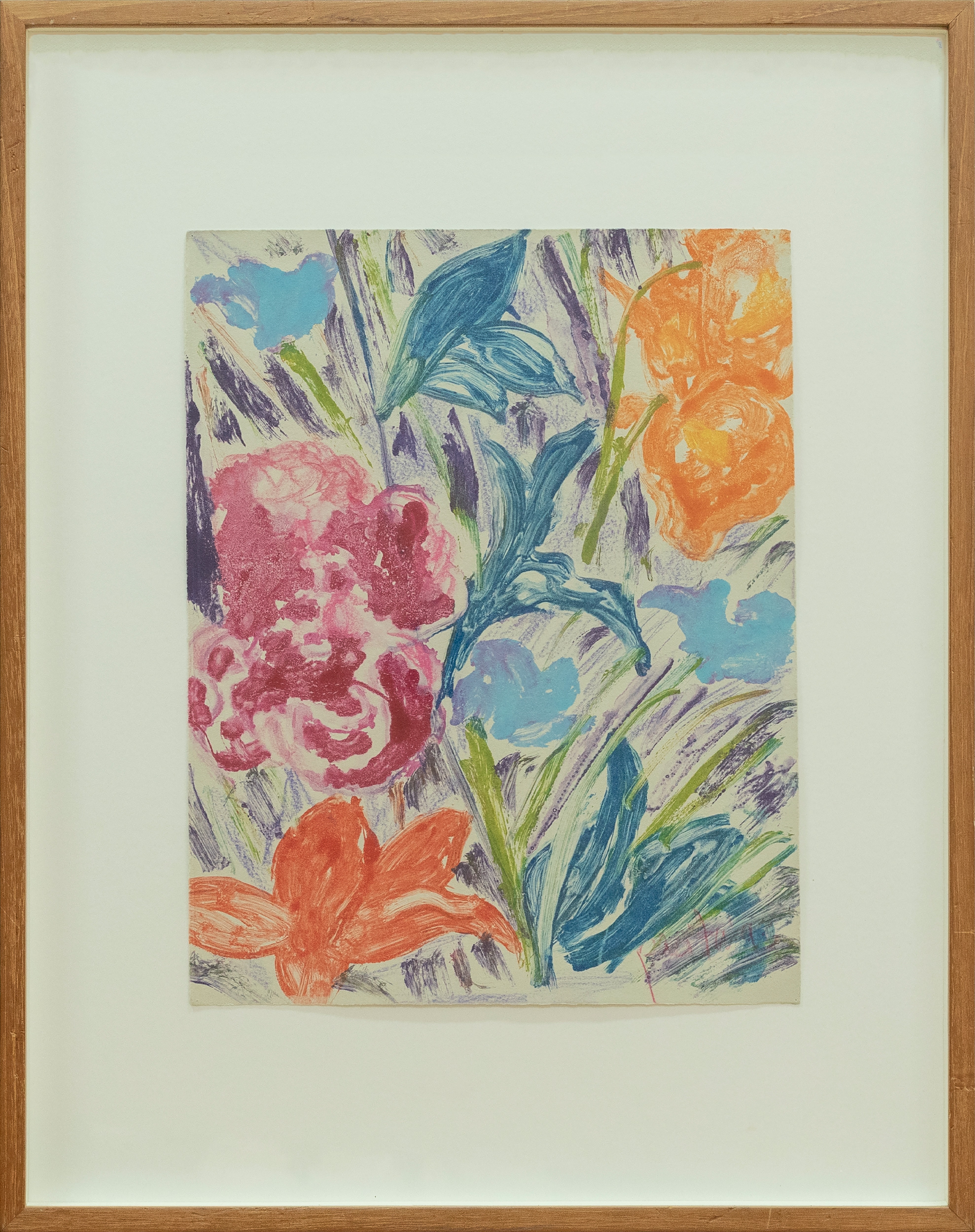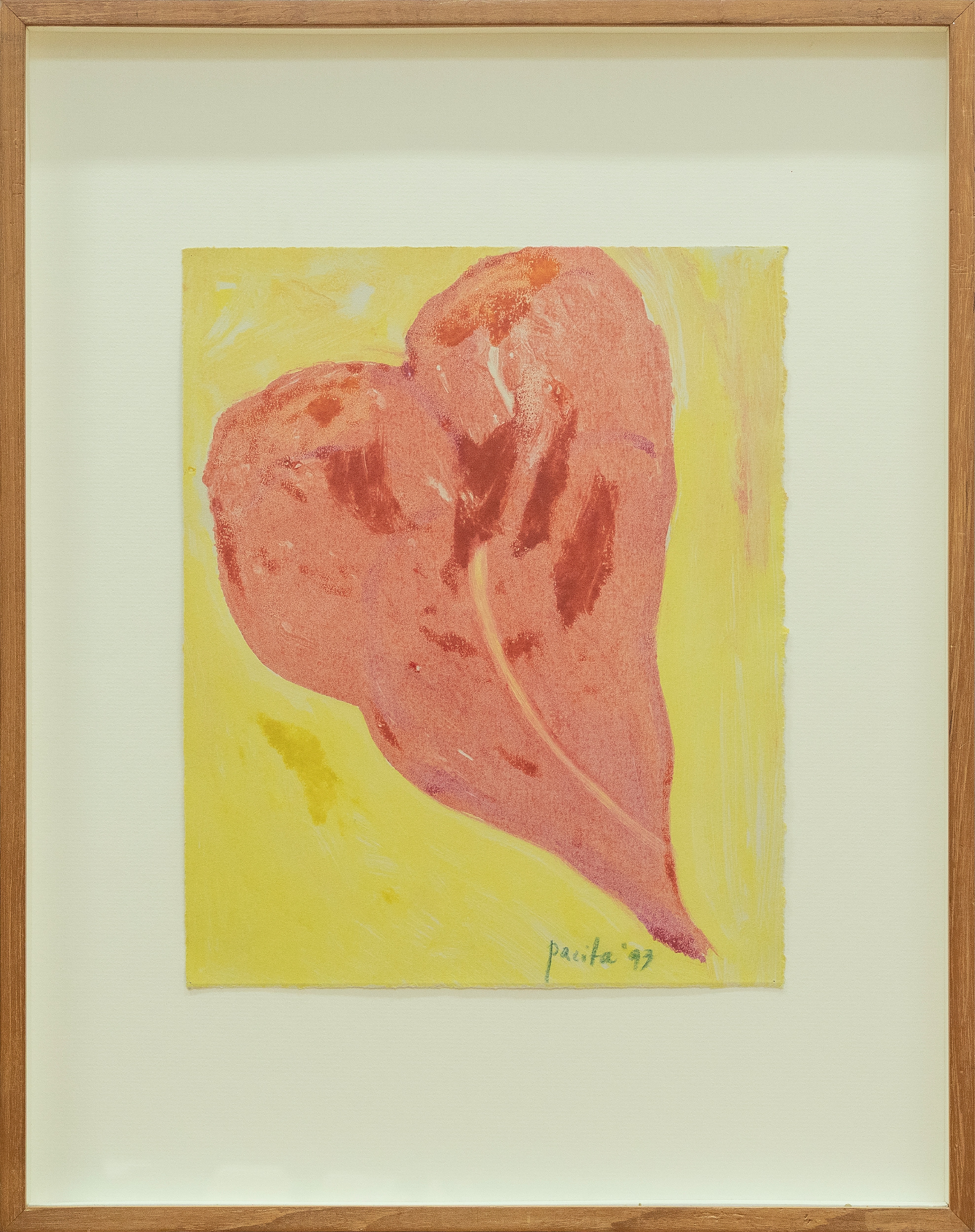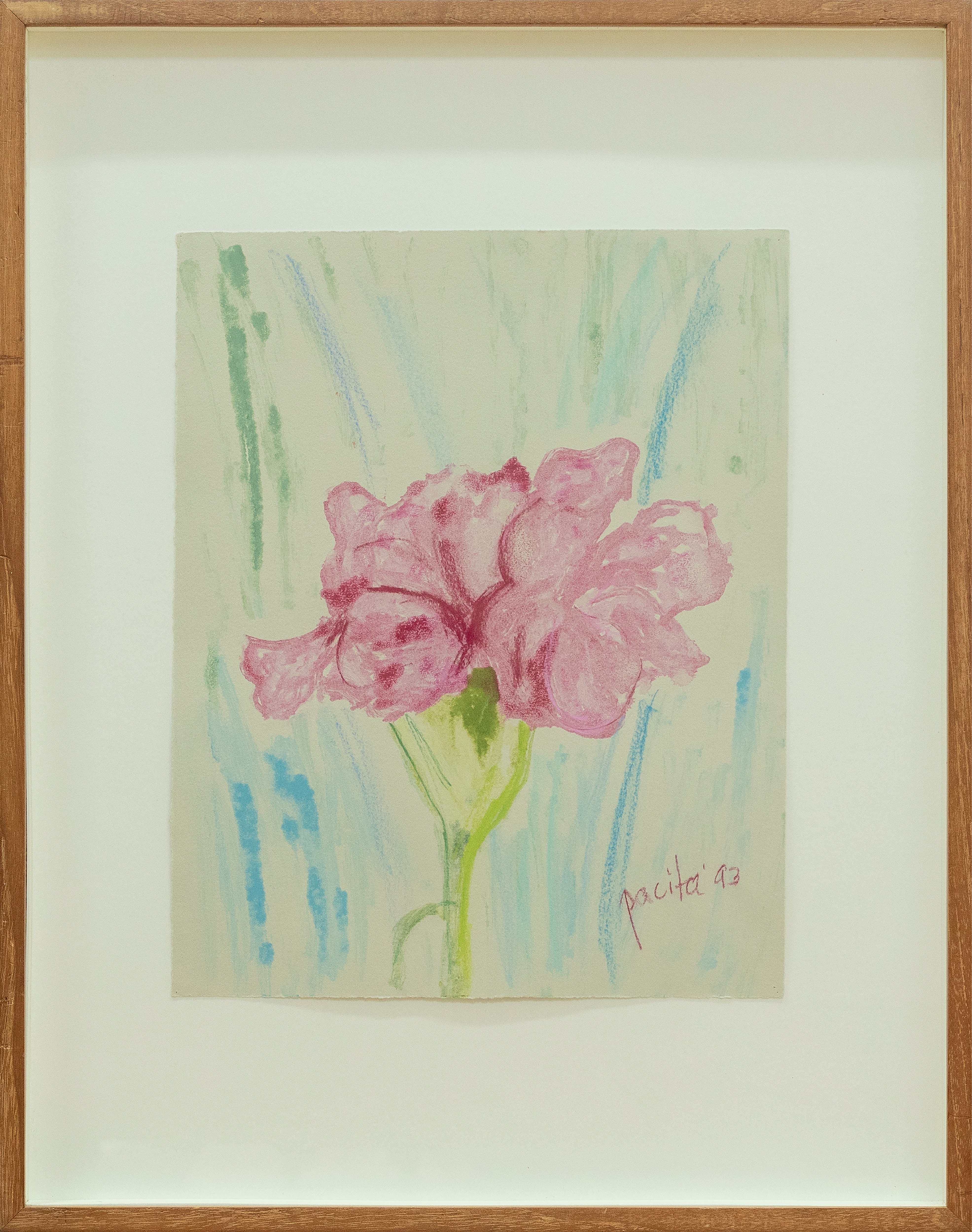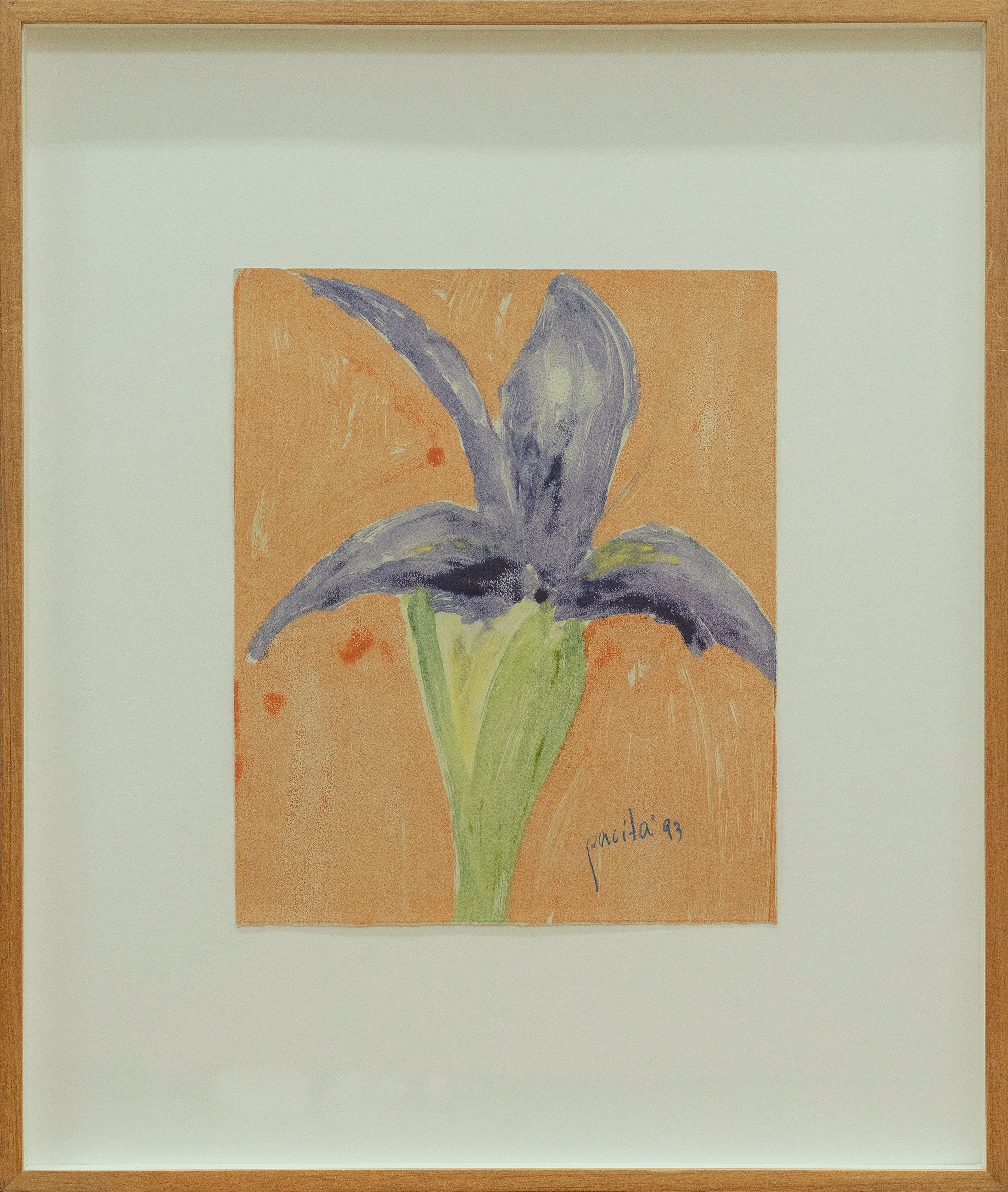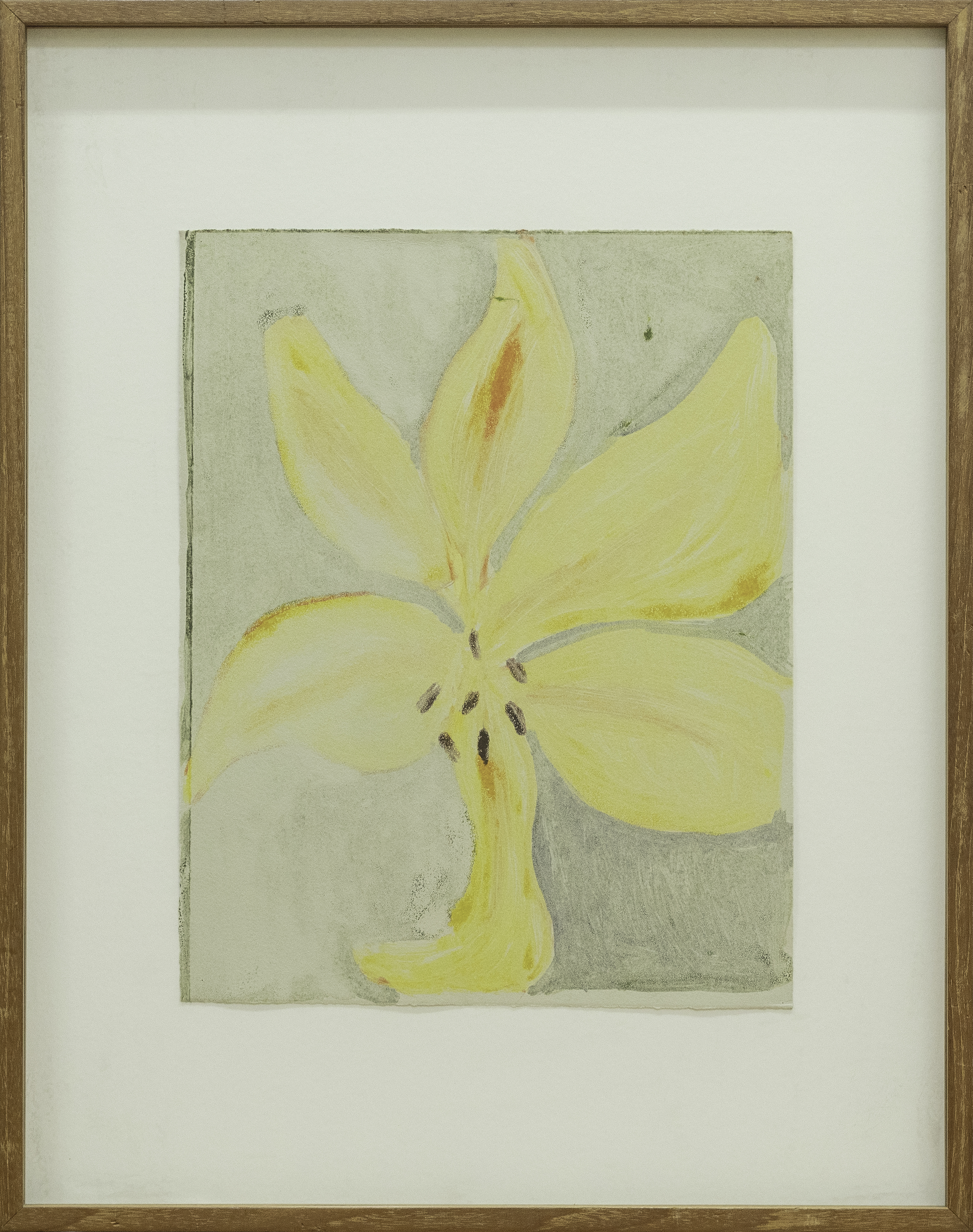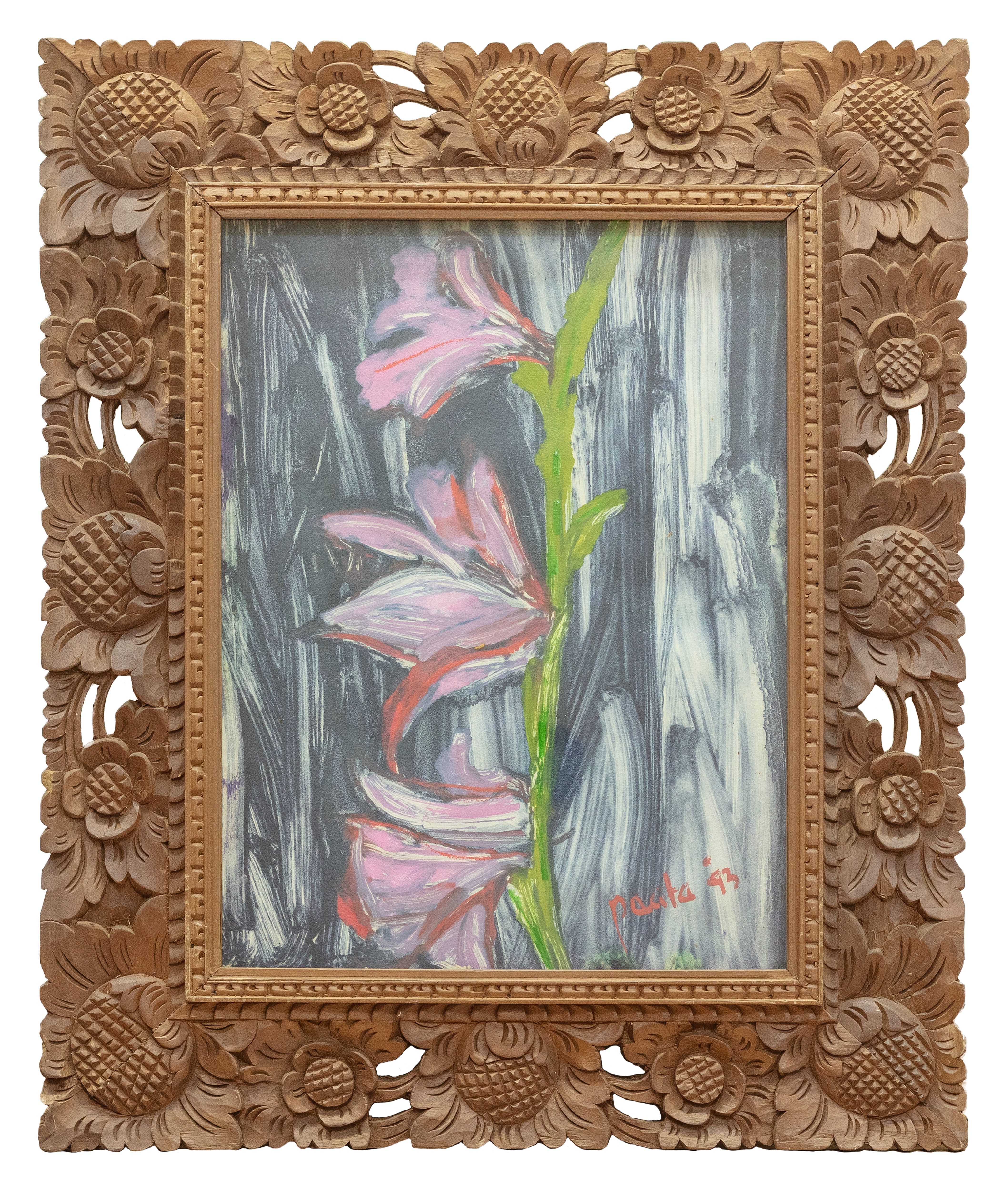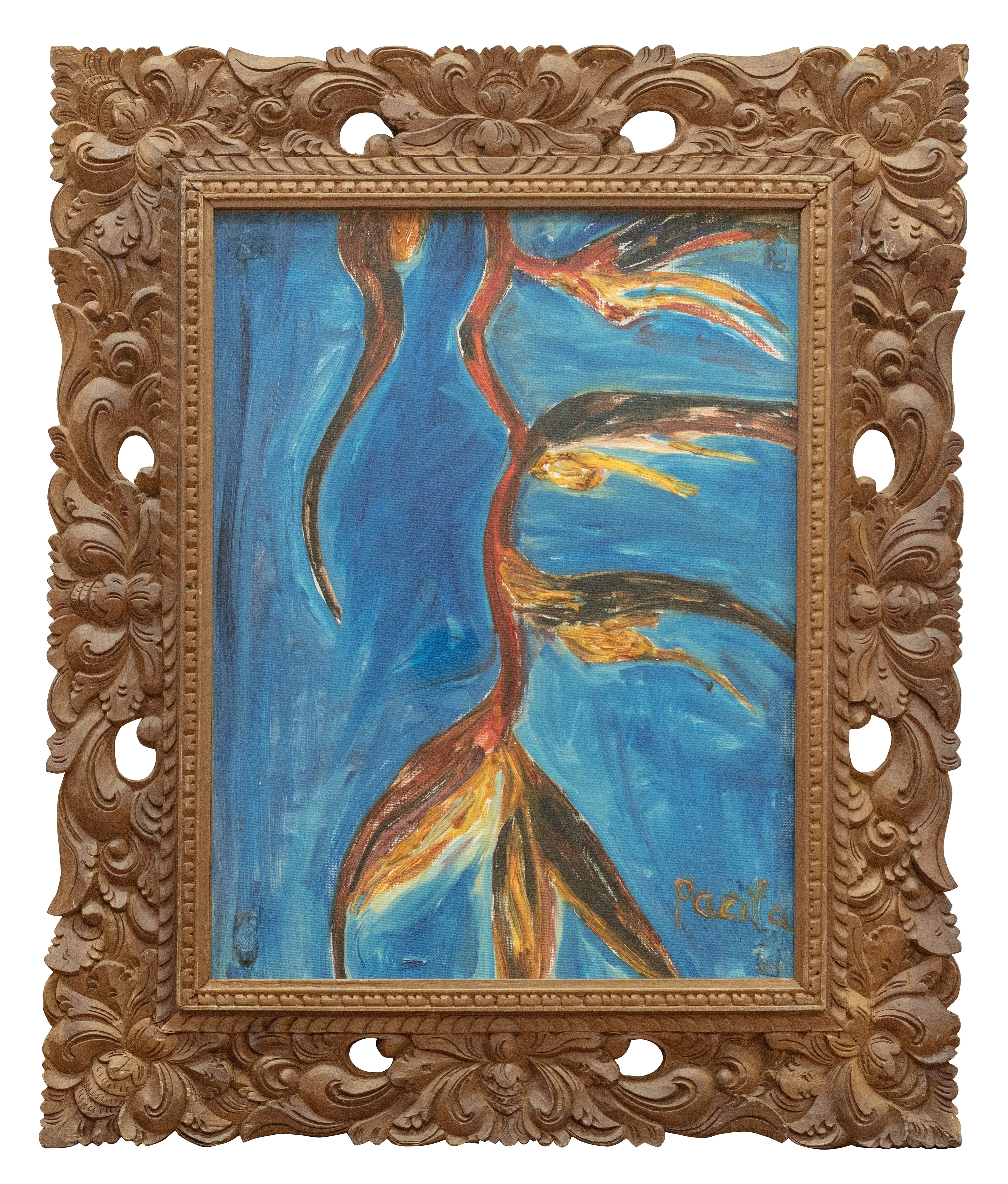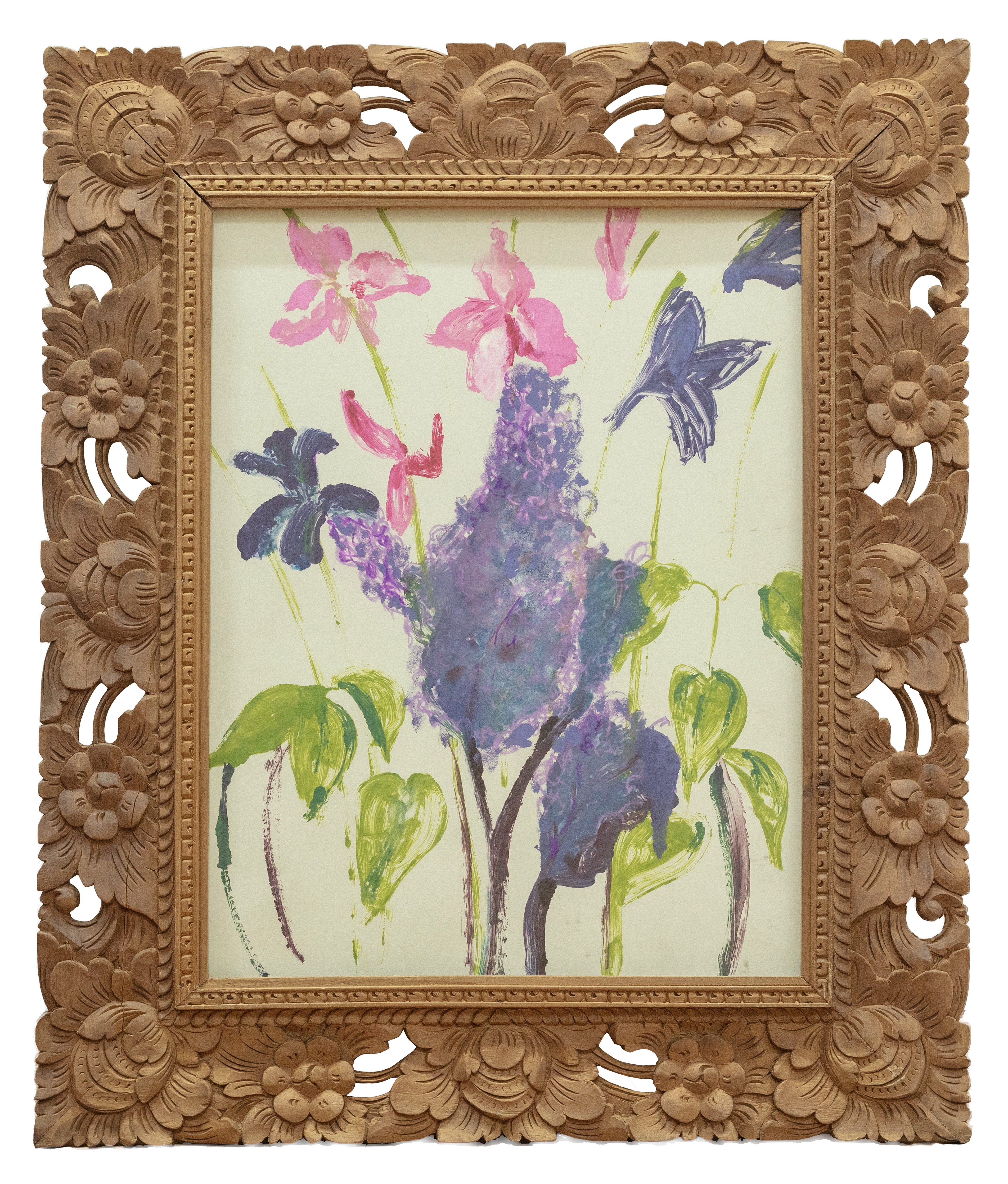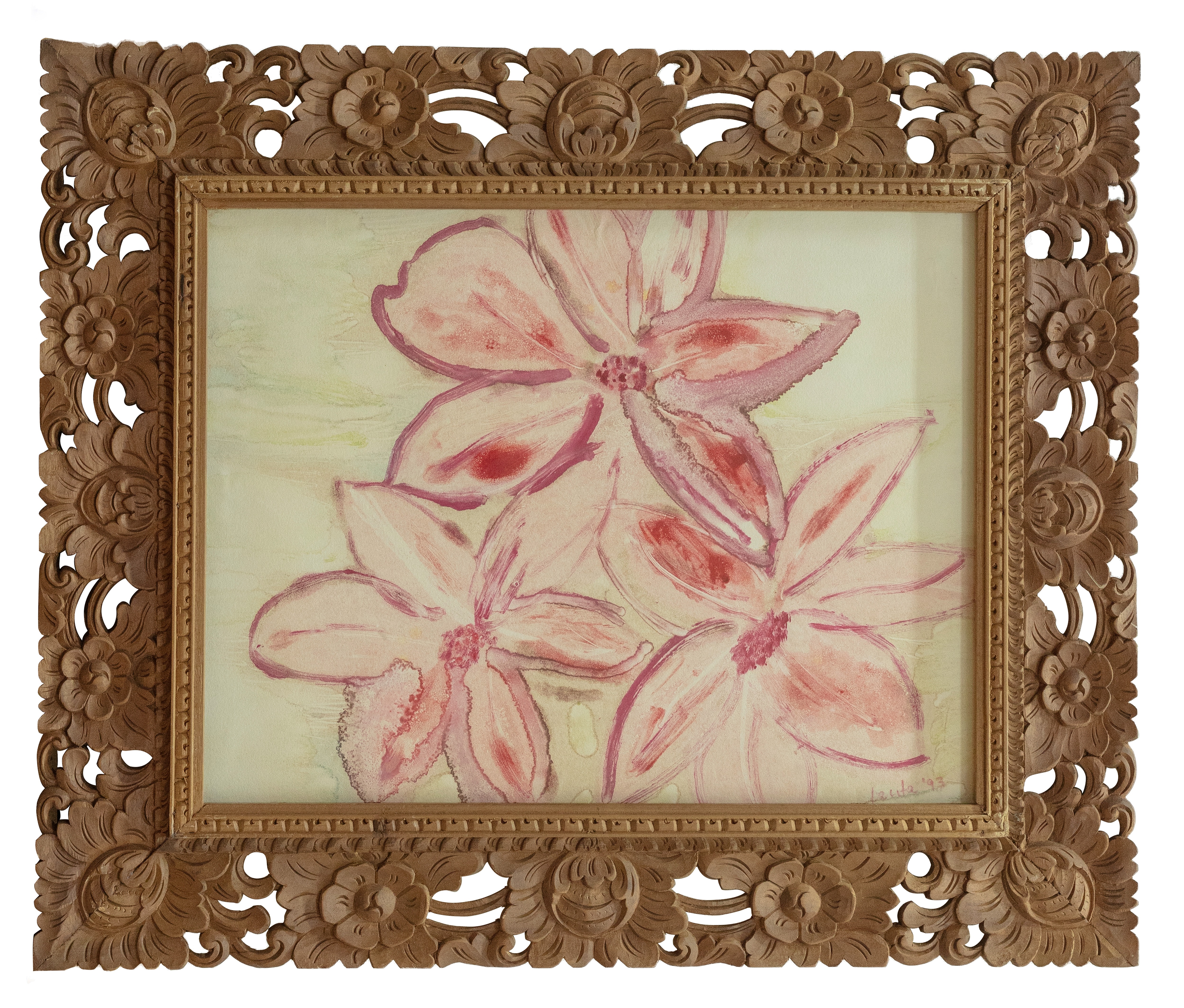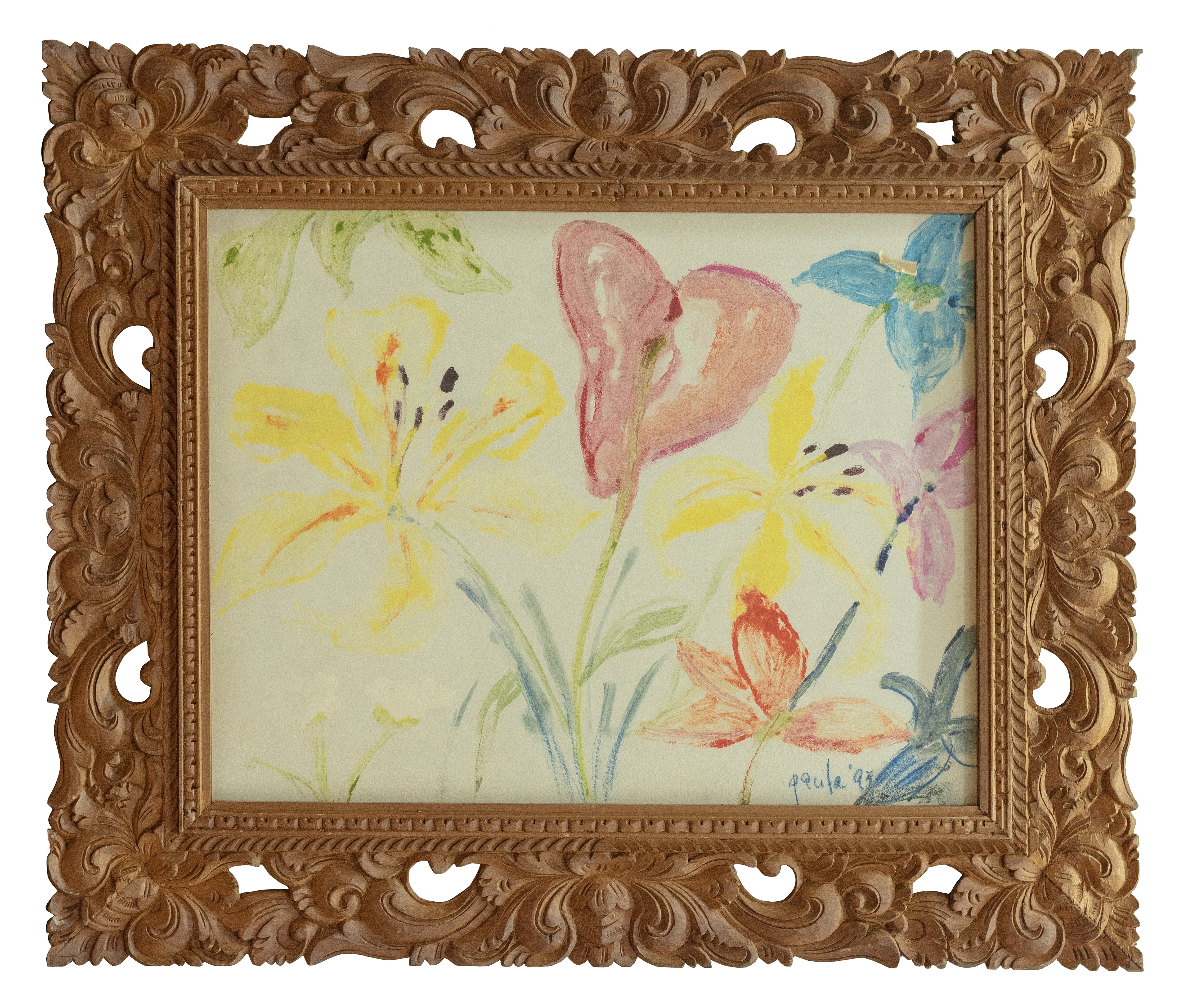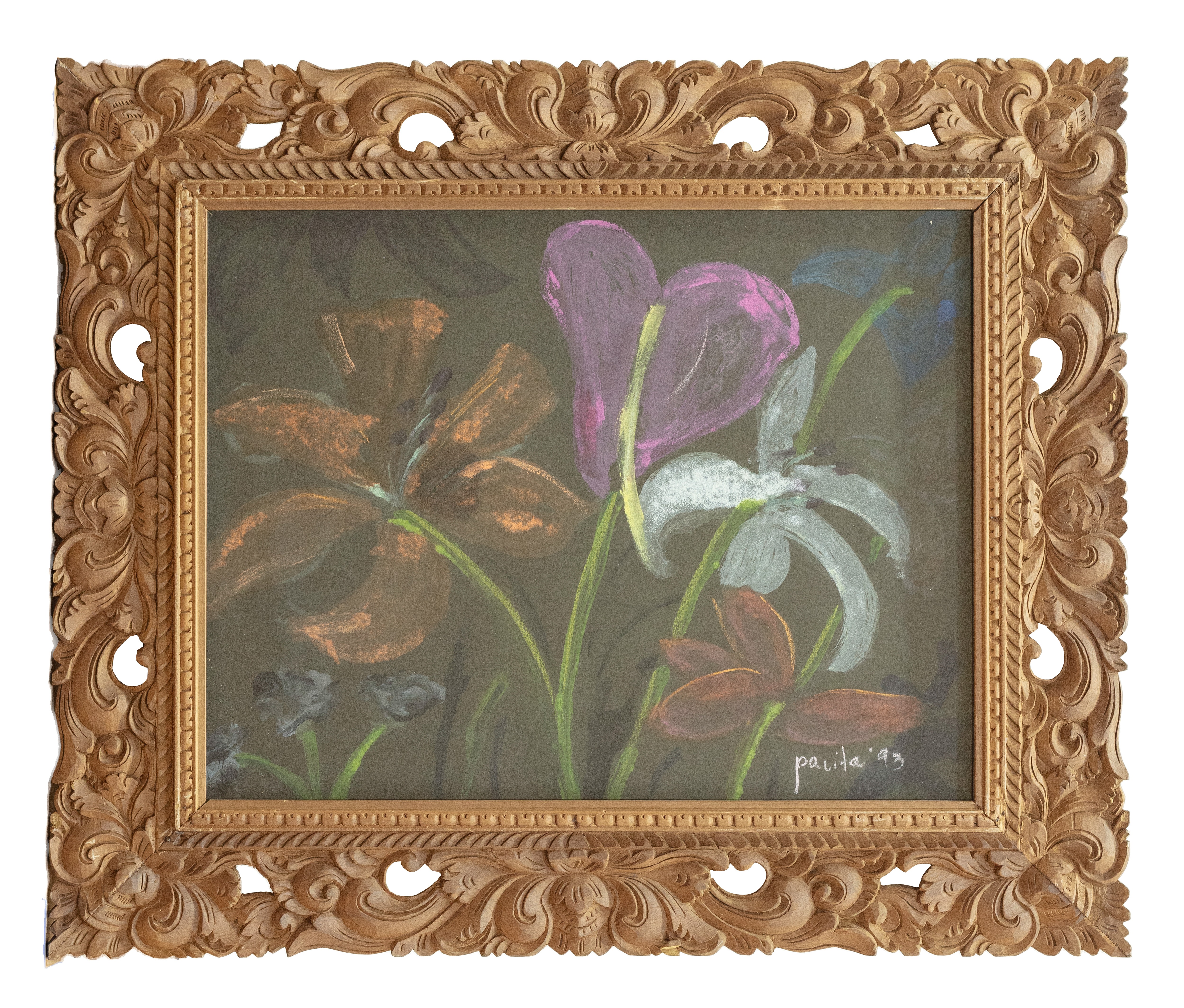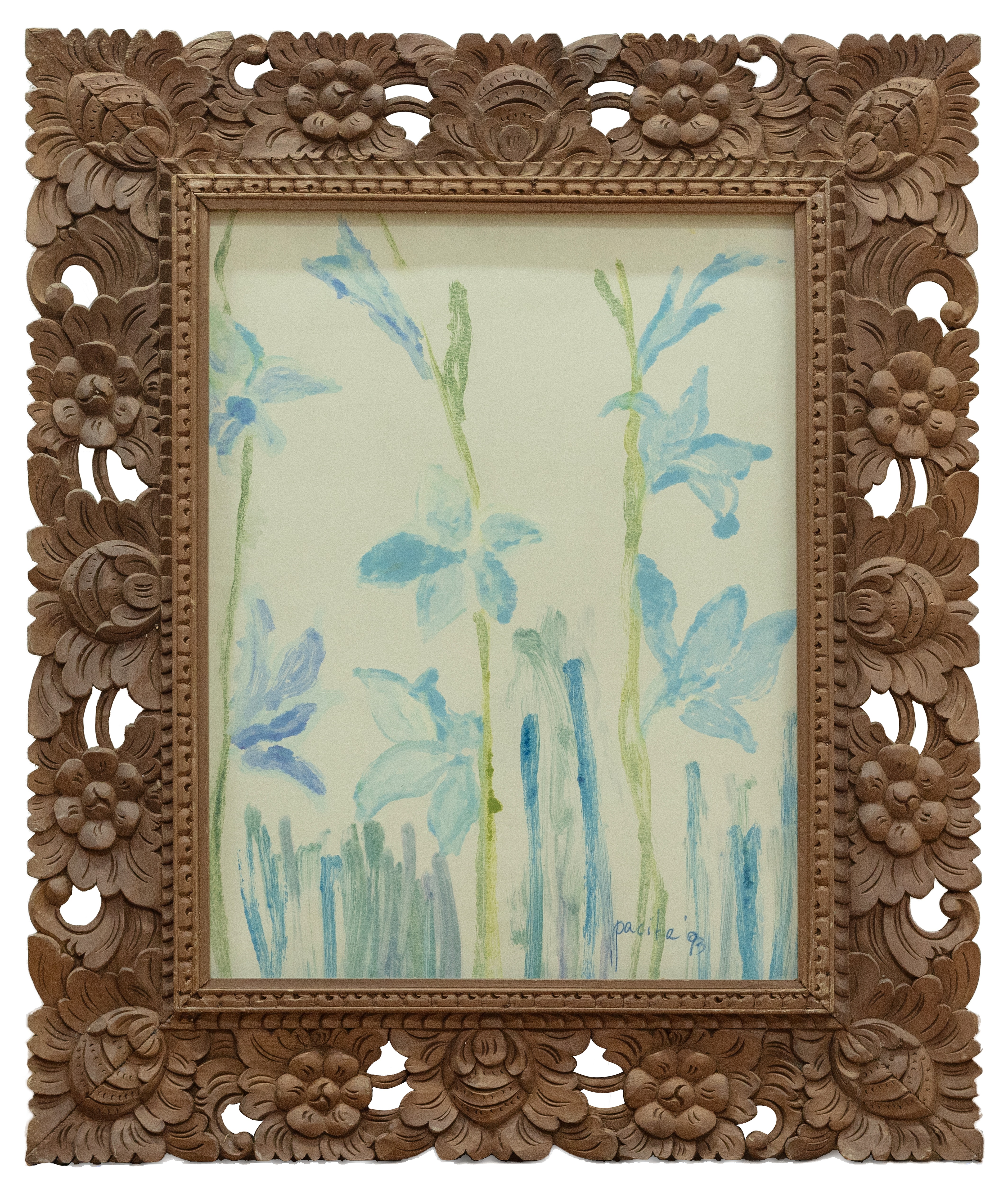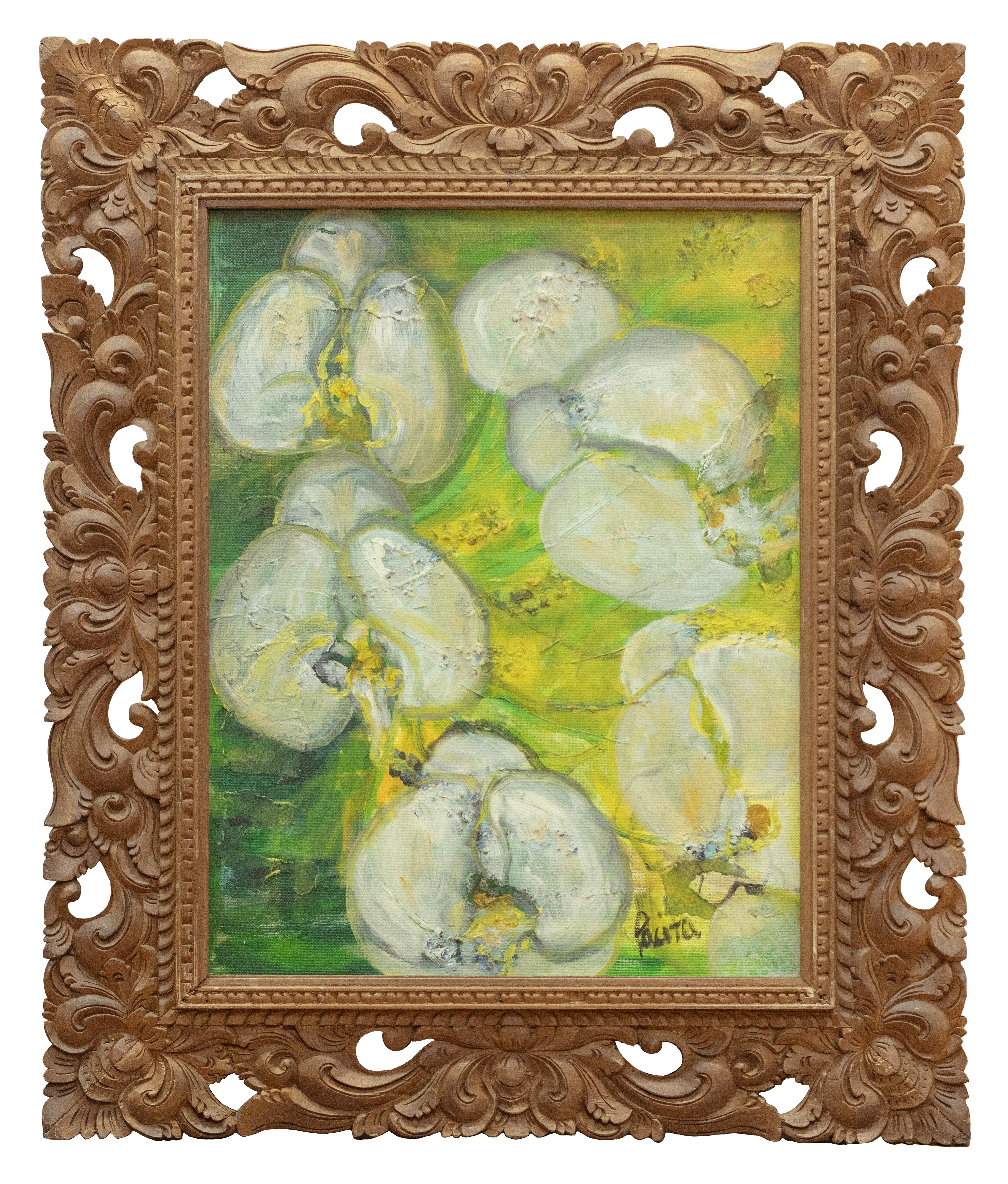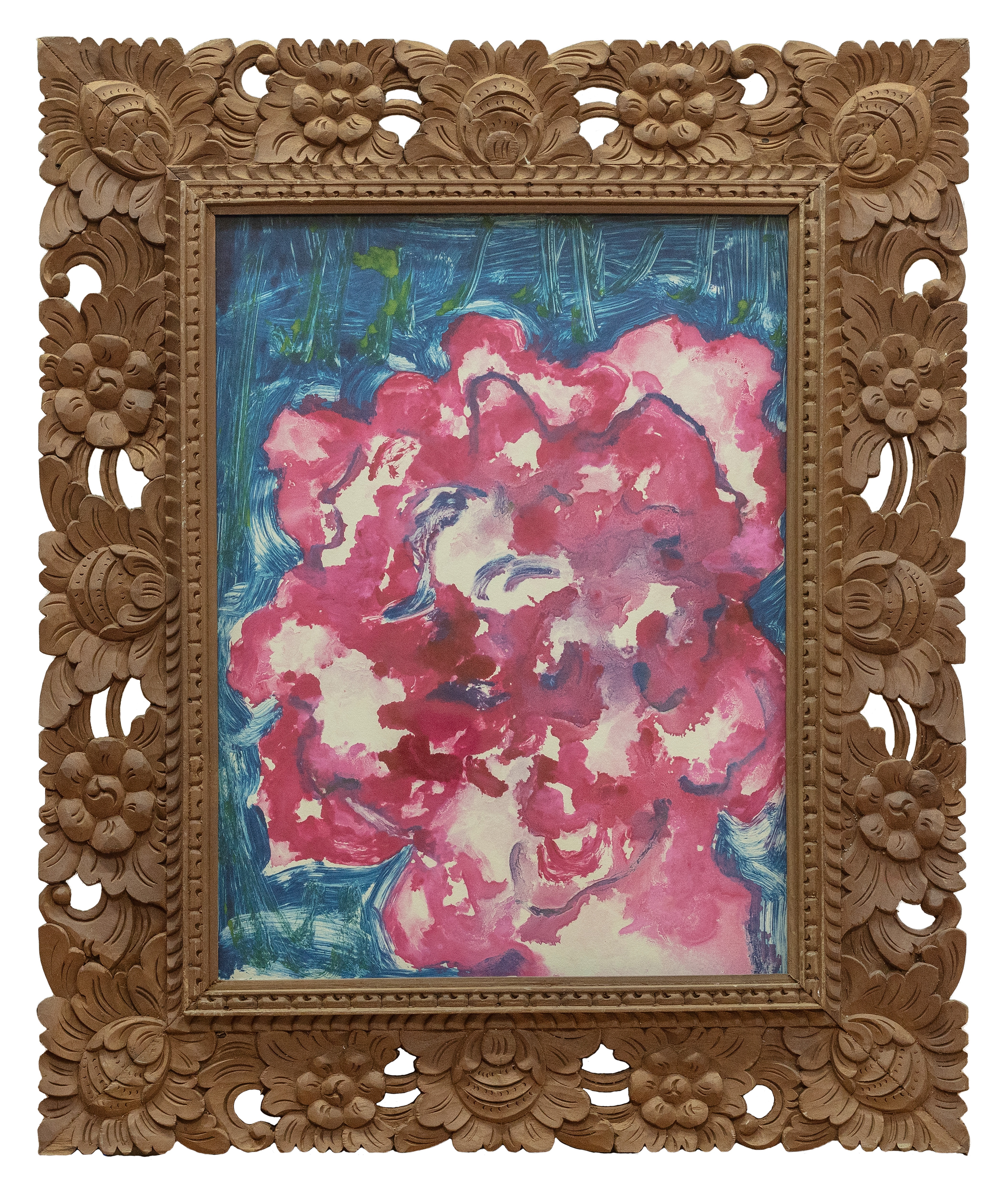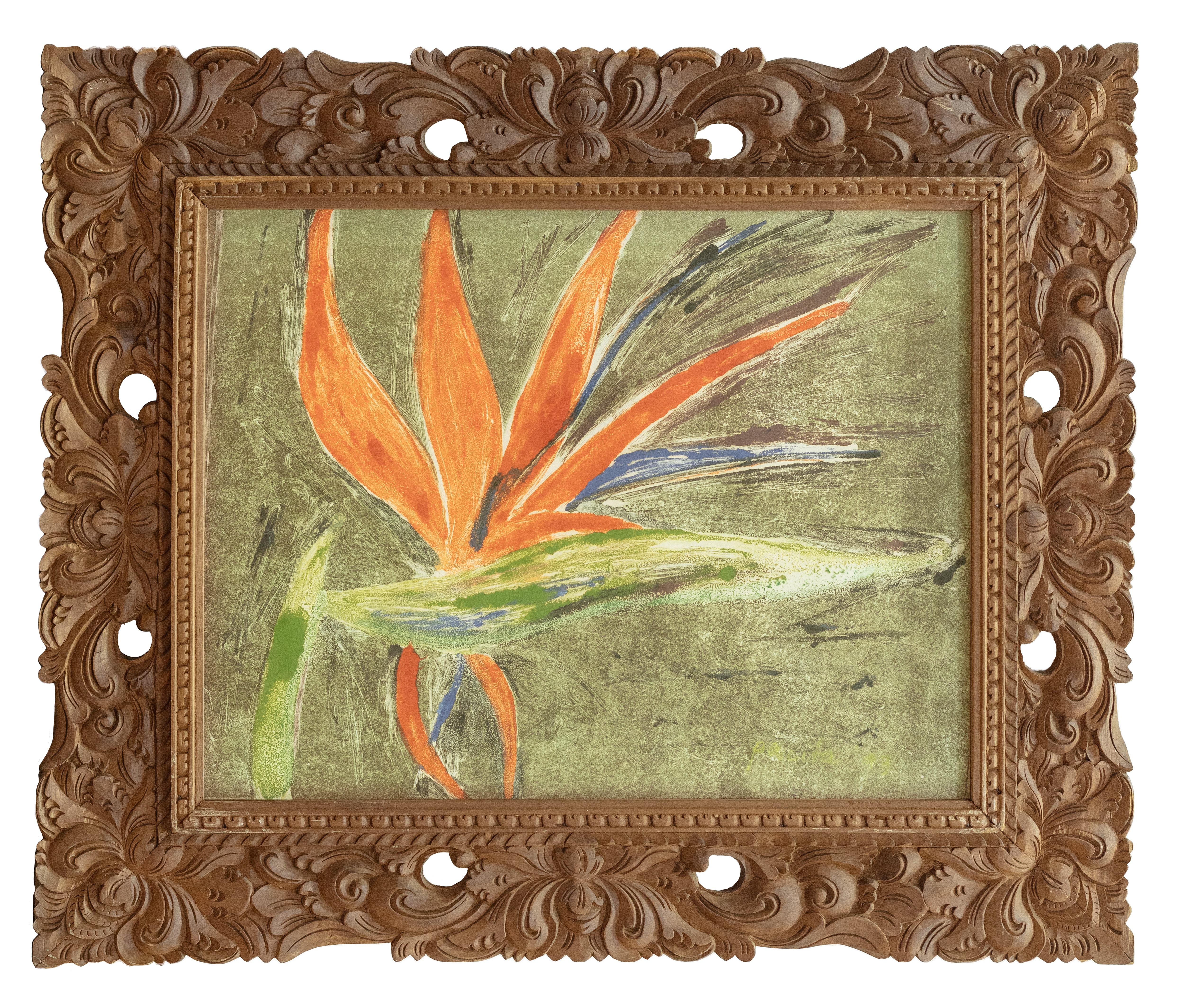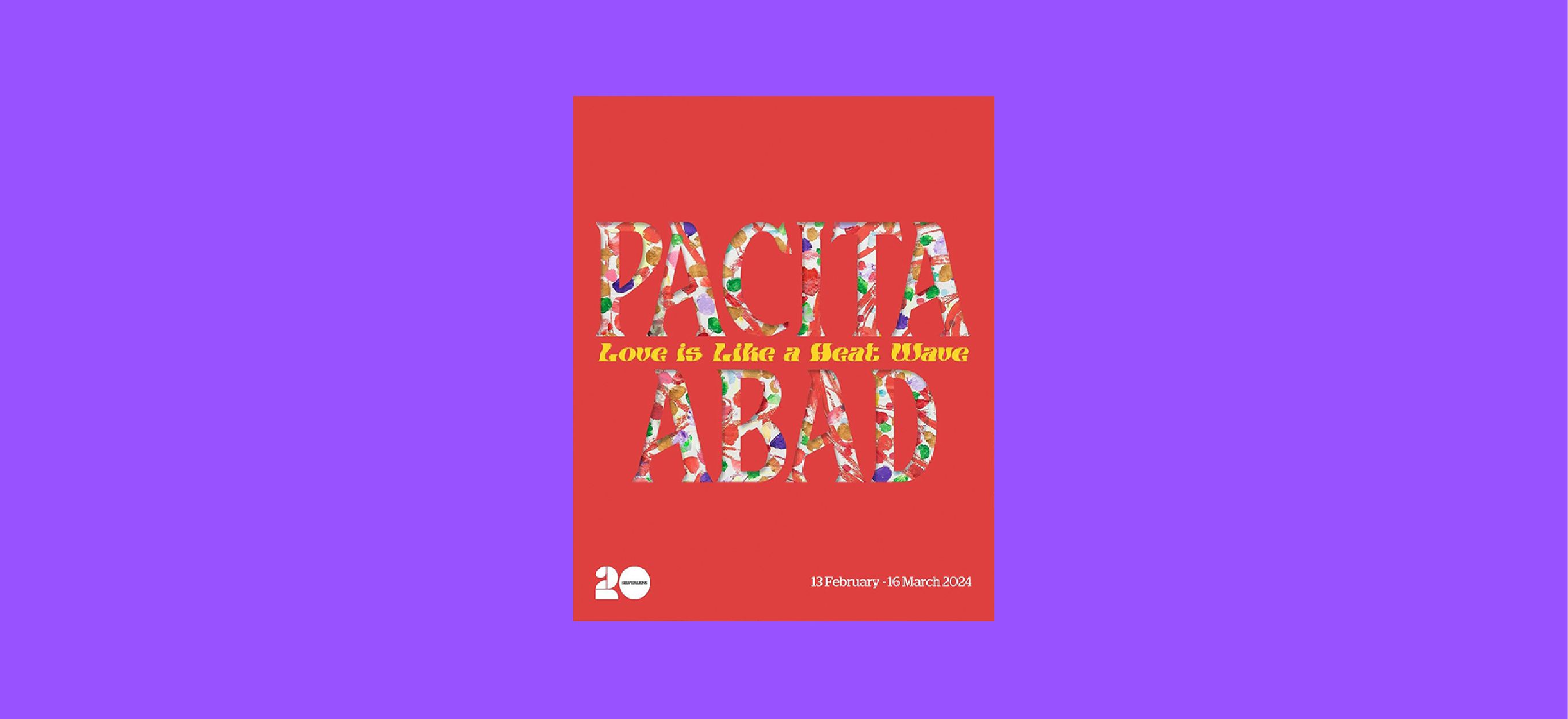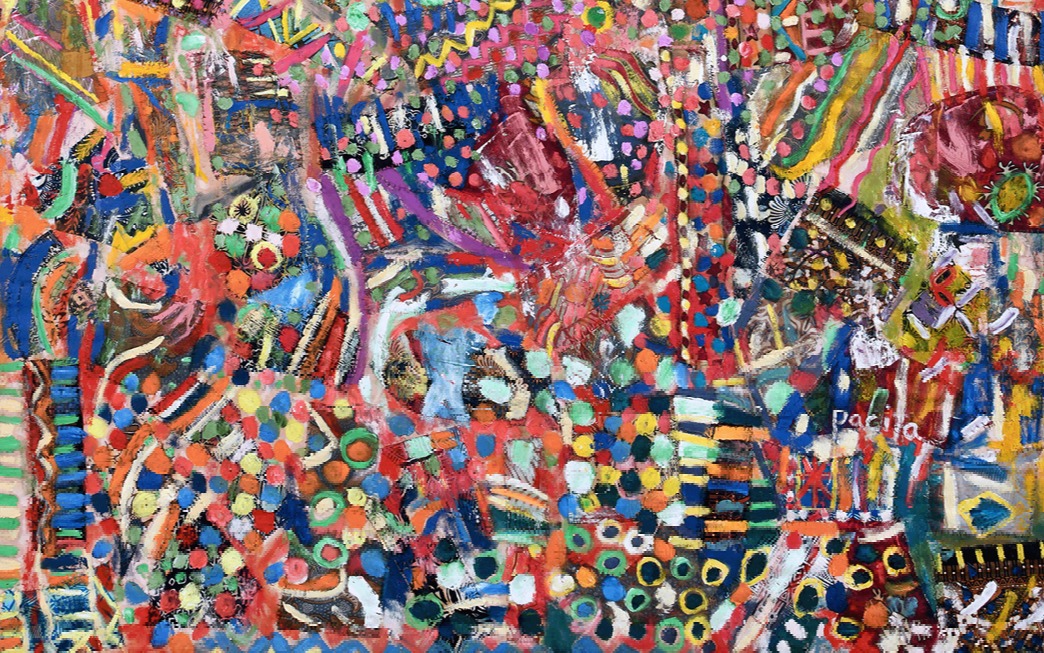
Love is Like a Heat Wave
Pacita Abad
Silverlens, Manila
About
Pacita Abad composes in layers and her works on paper are of no exception. The late itinerant artist is often understood synonymously with her trapuntos: paintings on quilted canvases embellished with hand-sewn ornamentations, which she collected from the many places she had visited and resided in. Yet, her experimental series on paper roused by her three-month residency at the Singapore Tyler Print Institute (STPI) in 2003 reveals that Abad’s inclination toward tactility and abundance is unbounded by media.
The artist, alongside print and paper-makers at STPI, translated her rich visual language onto paper-based media and processes; Abad painted on mylar sheets as long as her wingspan, she collaged buttons, beads, paper, and fabric onto prints, and learnt lithography, woodblock, and silkscreen printing—ultimately producing painted collages, paper assemblages, and reliefs. “The results of the STPI collaborative process overwhelmed me, as the prints became extensions of my paintings, with their luminous colours textured with the added glitter, fabric, buttons and mirrors,” Abad shared in the exhibition catalog for “Circles in My Mind,” the residency’s resultant show comprising more than 50 works on paper, which was held from October 2003 to January 2004.
Later that year, in September 2004, Abad’s “Circles in My Mind” exhibition opened at the Cultural Center of the Philippines (CCP). As it brought the artist’s most recent foray into paper to Manila and showcased Abad’s ever-growing practice, the exhibition also marked a homecoming: Abad had just built a studio in Batanes that year after decades of living in multiple countries overseas. “Pacita Abad: Love is Like a Heat Wave” celebrates the 20th anniversary of “Circles in My Mind” at the CCP, a significant exhibition that would become the artist’s final presentation before her death in December 2004. But it also signals an analogous return as the artist’s first solo presentation in the Philippines following the opening of her landmark retrospective in North America last year.
Large collages of drawn, painted, printed, and cut out circles populate the gallery’s main space. The shape’s dominant presence was intentional: “Circles have always been in my work and they are direct, simple, modern, universal, intimate, fascinating and playful,” Abad reflected in the STPI catalog. In the exhibition’s titular piece, Love is Like a Heat Wave (2004), red swirls of oil pastel intertwine with red glitter and coalesce with multicolor acrylic dots, resulting in a fiery frenzy suggestive of a stomach teeming with butterflies, warming cheeks, or dizzying thoughts. Abad’s ability to capture feeling and atmosphere through color, texture, and gesture is more evident in her abstract works where the absence of comprehensible figures and narratives allow for pure form.
In the smaller room, delicate oil-on-paper monoprints of flowers in hand-carved Balinese frames provide a quiet sanctuary from the boisterous collages. Painted between 1993, a year before Abad moved to Indonesia from Washington, DC, and 1997, these gestural and exquisite paintings are rarely exhibited and largely unseen by the public. Many of the paintings are akin to studies: carefully rendered form and incredibly intentional lines against a simple—or bare—background. Their simplicity and muted colors reflect a loyal representation of the flora in their truest form. The 1993 Anthurium with Lily, for example, capture the flowers in light pinks, blues, and greens alongside sunny yellows and oranges. Their wispy stems seem to sway against a soft breeze. The whisper-like essence of the monoprints is likely an effect of the print-making process itself, where colors are transferred from the painted surface onto the paper through the pressure of the artist’s gestures. In this way, the floral paintings are records or memories of a certain moment, of these flowers, of Abad at the cusp of yet another migration.
With Abad best remembered for her ravenous treatment of the surface and for her maximalist compositions, these raw representations of flowers prove that there is so much more to the artist’s range than we know. In the process of unearthing her archives and resurfacing her practice in the past few years, we have yet to see everything that she has to offer. Such surprises provide the excitement that surrounds Abad and her work; the artist and her practice cannot be easily identified within a singular culture, place, movement, or medium, because she had lived in multitudes and created art in the same way.
Comparable to the glittering spirals and colorful dots in Abad’s abstractions, time itself proves to be cyclical with culture thriving on constant rediscoveries and histories repeating themselves. While Manila has changed since “Circles in My Mind” in 2004, certain ideas and values have circled back to the present. With new connections, perceptions, and understandings adding further texture to her oeuvre, how do we then situate Abad and her practice within context of today’s Philippines? “Love is Like a Heat Wave,” in rehanging her emblematic paintings from the earlier CCP exhibition while introducing less known yet pleasantly surprising quieter prints, positions Abad as both familiar and unfamiliar. It confirms that the process of unraveling all of her layers has just begun.
– Nicole Nepomuceno
Pacita Abad (b. 1946, Batanes, Philippines - d. 2004, Singapore) is known for her large-scale quilted trapunto paintings characterized by vibrant color and accumulated materials. Marked by vivid colors and intricate materials, her expansive paintings span a broad spectrum of themes, drawn in form and concept from a number of ethnic traditions of craft and thought. From portraying tribal masks and social scenes to intricate underwater landscapes and abstract forms, Abad's work transcended borders.
In 2023, Abad was the subject of a major retrospective exhibition at The Walker Art Center, which then traveled to SFMOMA. The exhibition will then travel to MoMA PS1 and Art Gallery Ontario in 2024–2025. Her work has been featured in solo exhibitions at the National Museum, Jakarta, Indonesia; Hong Kong Arts Centre, Hong Kong, The Museum of Philippine Art, Manila; Cultural Center of the Philippines, Manila; Bhirasri Museum of Modern Art, Bangkok, Thailand; Singapore Tyler Print Institute, Singapore; The National Museum for Women in the Arts, Washington, D.C.; and the National Center of Afro-American Artists, Boston, among others. She has participated in numerous group exhibitions, including: Beyond the Border: Art by Recent Immigrant, Bronx Museum of the Arts, New York; Asia/ America: Identities in Contemporary Asian American Art, a traveling exhibition organized by the Asia Society, New York; Olympiad of Art, National Museum of Modern Art, Seoul, Korea; 2nd Asian Art Show, Fukuoka Art Museum, Fukuoka, Japan; and La Bienal de Habana, Havana, Cuba.
Installation views
Works
